

Graphic by Shelby Cotta
A look inside UF Residence Halls
Alligator Staff Report
Many students’ first foray outside their family home takes them straight to their freshman year college dorm. UF has 26 residence halls for students to choose from. The Alligator interviewed current and former residents of each hall to discover the good and bad in each.
Room layouts are an artist’s interpretation based on courtesy photos of the residence halls.
Beaty Towers
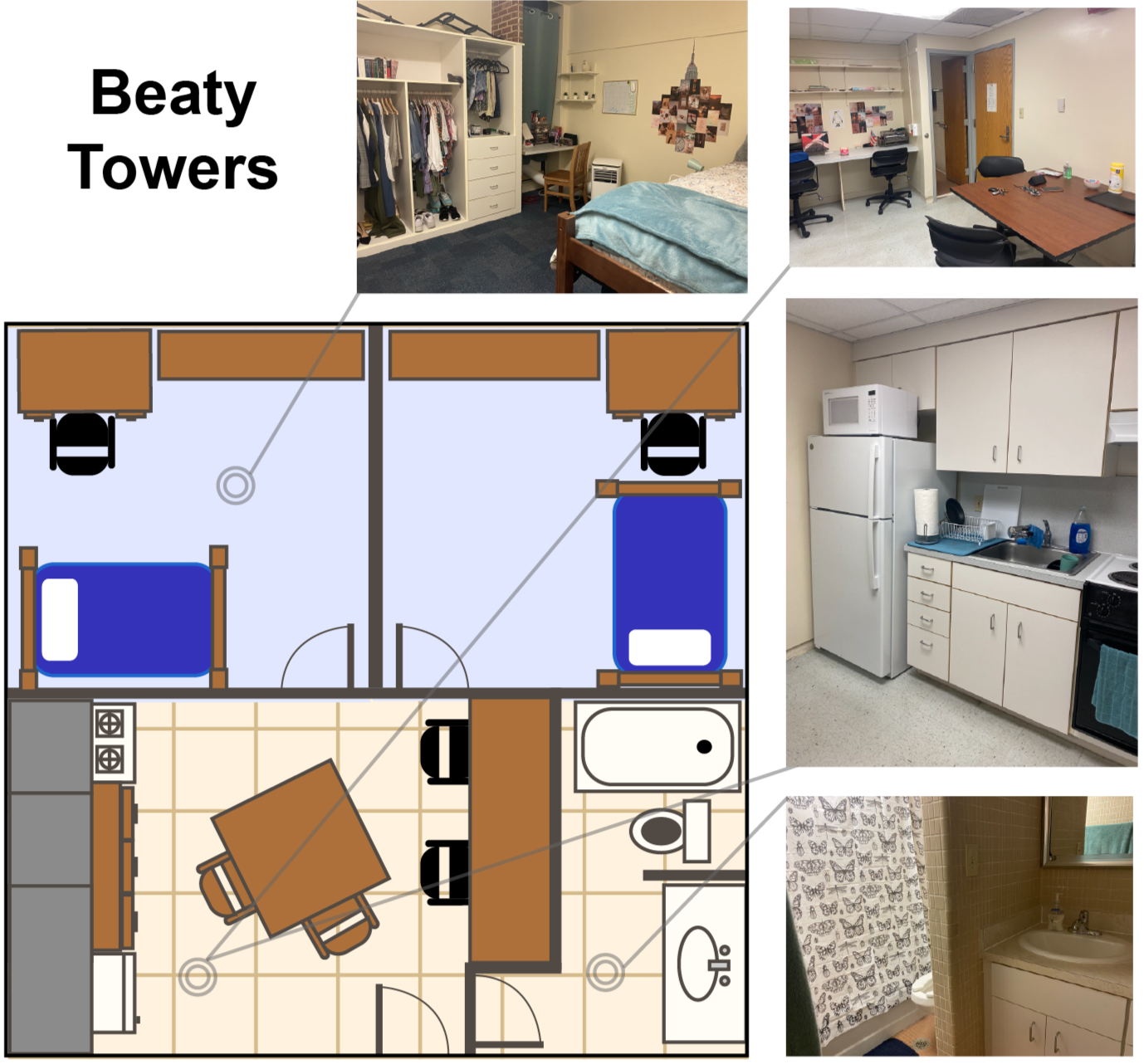
Standing over 160 feet tall, the Beaty Towers sit on the southeast side of campus near on-campus dining, Broward Recreational Center, libraries and sorority row. It is an apartment-style residence hall and includes a private bathroom, study and kitchenette in each suite. There are two bedrooms per apartment, each containing two twin beds that can be bunked or separated, according to UF’s housing website.
Beaty Towers houses a living learning community specifically for Innovation Academy students. The towers can hold up to 787 students who can connect through events led by the Tower Area government and residence hall staff.
Kenneth Cruz, a 19-year-old psychology sophomore, was the secretary of the Tower Area government his freshman year and helped plan events for the hall.
“We had a tie-dye and gelato event, and you could see all the residents interacting with each other,” Cruz said.
Beaty Towers’ amenities include 24/7 area desk services, laundry facilities, mail services, nighttime security patrols, furnished bedrooms, food market and a student night time shuttle pick up point, according to UF’s housing website.
It first opened in 1967 as the Twin Towers and were called Tower A and Tower B, housing women and men respectively. They were renamed after UF’s first dean of student personnel Robert Calder Beaty in 1971, and the towers became the East and West Towers.
Beaty Towers was the first UF residence hall with central air conditioning. The apartment-style housing was unusual at the time, making it stand out.
“It's one of the only apartment-style dorms,” Kristina Tosi, a psychology sophomore said. “I was like, ‘I really want to live here.’”
Pros:
“The study room in the common area was awesome,” Ava Lucke said.
“Having your own bathroom, and then also having staff that comes and cleans it once a week was nice,” Lucke said.
“Our built-ins were really good for closet space,” Samantha Simpson said.
Cons:
“Parking is hard around there,” Lucke said.
“It's further from food and things to do,” Tosi said.
“You either have to convert your beds into these weird bunk beds that aren't actually bunk beds or sleep so close to each other that you could hold hands every night,” Simpson said.
Jennings Hall
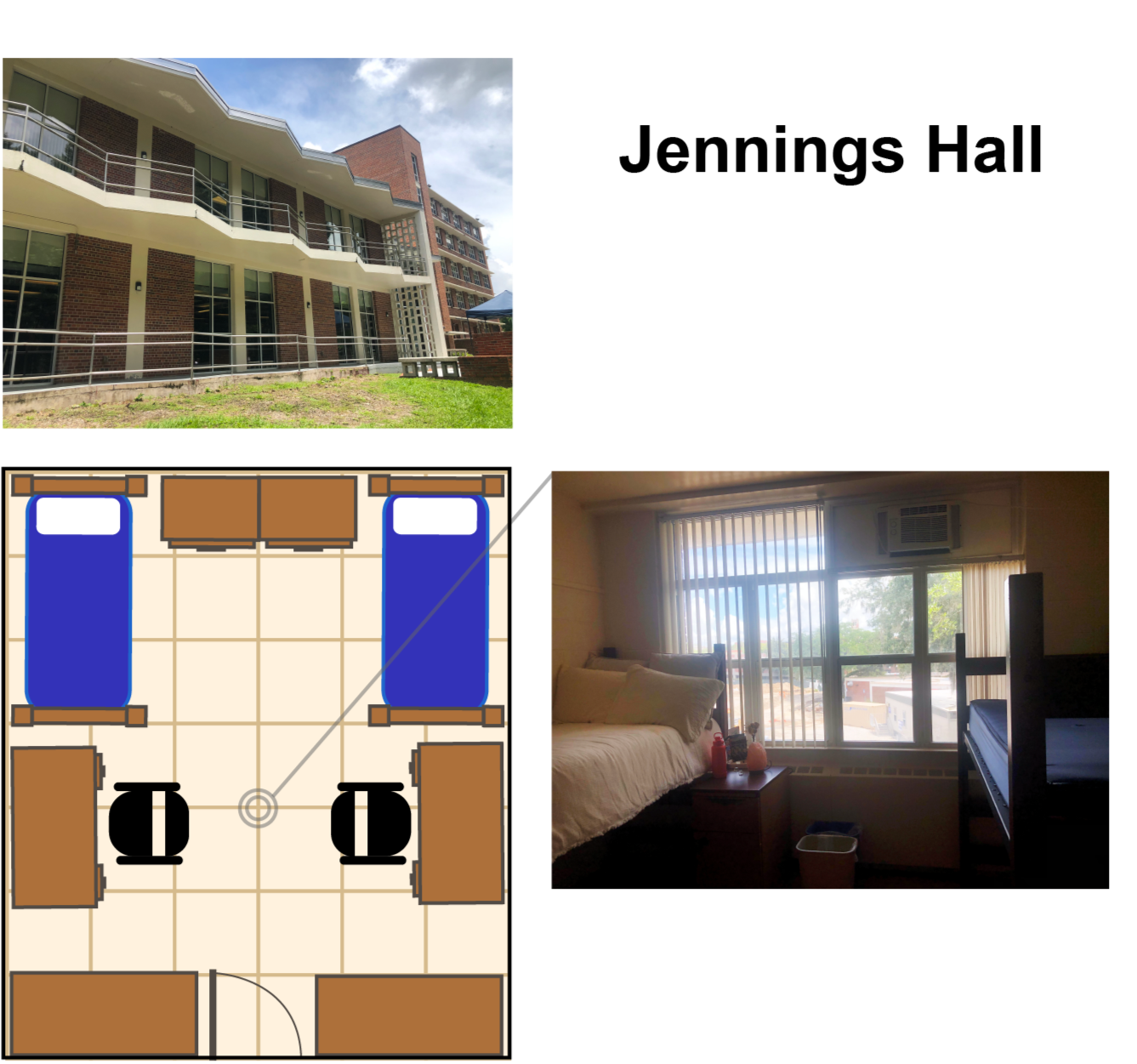
Jennings Hall is a traditional residence hall that offers double and triple rooms. It is located near Sorority Row, the Education Library and Fresh Food Company, an on-campus dining center.
Sydney Leifermann, a 20-year-old UF political science and criminology junior, said she loved the location and believed it to be in close proximity to her core classes freshman year. Each floor of Jennings Hall has communal bathrooms and kitchens with a microwave, stove and an oven, according to UF’s housing website.
Washers and dryers are located at the bottom floor of the building.
Jennings Hall construction was finished in 1961 and was the last of six all-girl residence halls built in accordance with the coeducation bill of 1948 that allowed women to enroll at UF. While it is no longer exclusive to women, two wings separate residents by gender.
It sits in a wooded area of campus and has a two-story atrium lobby. Residents can use common spaces with amenities like a television and ping-pong table. The common space makes it easy to meet new people, said Philip Grandoff, a 20-year-old nutritional science junior who lived in Jennings during his freshman year.
“We had a great spot for people to just really hang out,” Grandoff said. “The classroom downstairs is cool because … it’s kind of a communal study place. It was a fun place to do work.”
The residence hall is well-known for being one of the most social. Morgan Emmi, a 19-year-old health science sophomore, said she and her roommate chose Jennings after hearing it's where students can make the most friends. She said the residence hall had a strong sense of community, and the large lobby area made it easy for a lot of students to be in one place.
Jennings is perfect for students who want a social hall, but those who prefer quieter spaces should look elsewhere, Emmi said.
“If you’re looking for the communal dorm experience, definitely be in Jennings,” Emmi said. “It was absolutely perfect, and I would choose it all over again.”
Pros:
“I think it has a nice common space that people get to hang out in,” Grandoff said.
“I never had any problems with bugs, rodents or anything,” Grandoff said.
The furniture is newer, and the desks are large and fit a lot of things, Grandoff said.
Cons:
Air conditioning was a loud window unit placed above one of the beds, Grandoff said.
You have to take toiletries in a shower caddy and walk to the communal bathrooms, Emmi said. You have to be comfortable showering in stalls next to other people.
When it was rainy or especially hot outside the bathrooms felt gross because of the humidity, Leifermann said.
Cypress Hall
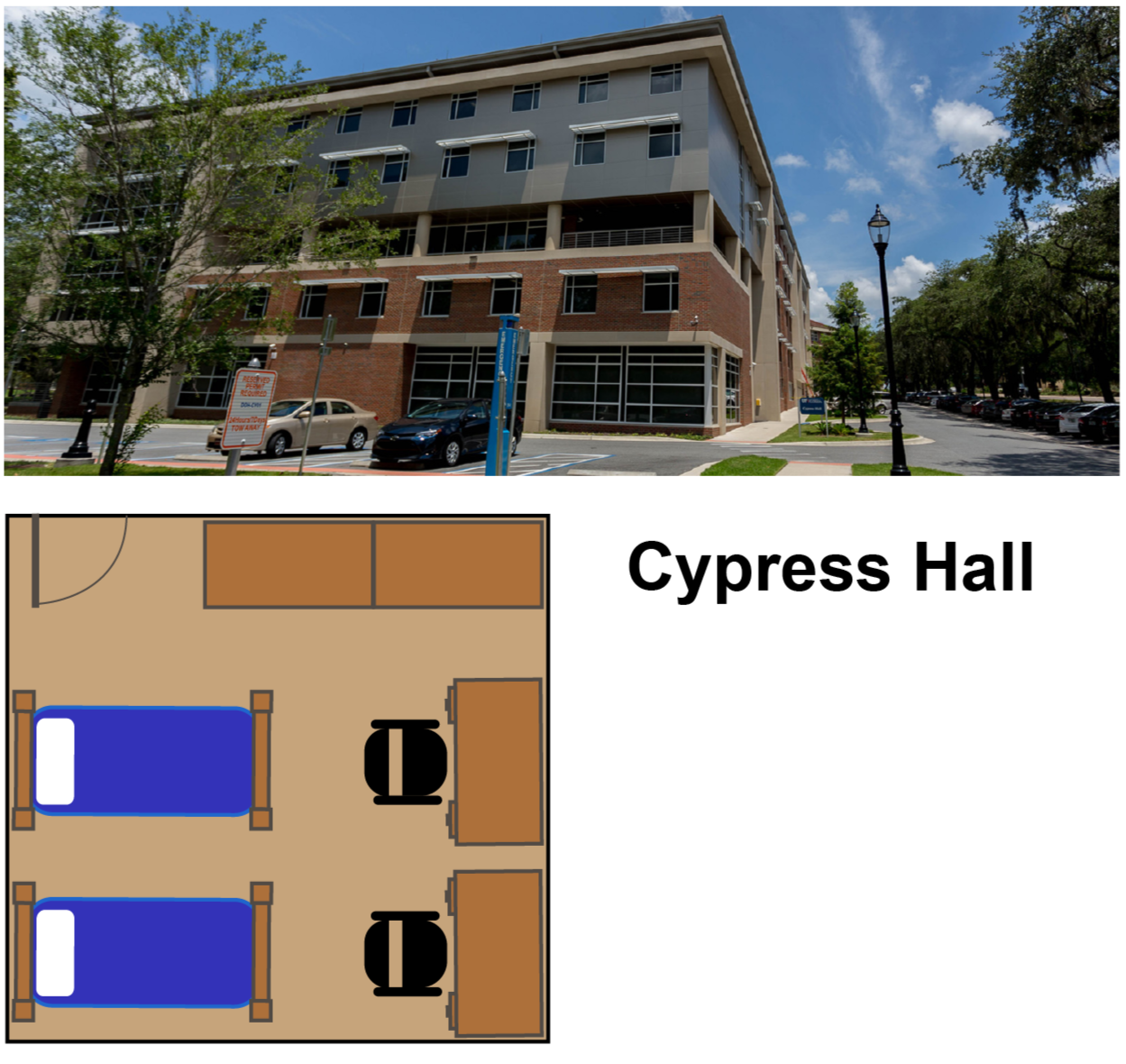
Cypress Hall sits in the Yulee area located on the corner of 13th Street and Museum Road on UF’s campus. The three-floor residence hall holds 255 students and offers plenty of amenities.
Cypress Hall rests on the east side of campus and offers pathways to places of interest like the College of Education, College of Arts and the College of Design, Construction and Planning.
The building is fairly new, officially opening to incoming freshmen in 2015.
Although its parking lot for both cars and scooters seems limited, students should find it easy to navigate the area around the other halls, including Yulee, Reid and Mallory.
Cypress is equipped to provide accommodation for 35 students who may have a significant mobility impairment. There are movable sinks, a bidet and a shower with no curtains or sliding door in the restrooms. Its bedrooms are enhanced with SureHands lift systems to aid students in getting from point “A” to point “B.”
An extra accommodation is a technology system for controlled access to the rooms feature such as closing the blinds, hitting the light switch and checking on the video-equipped doorbell.
There are three living options in Cypress Hall, which vary in both size and number of beds. The single suite makes room for two beds and a shared bathroom, while the double suite connects two rooms with four beds and a connected shower.
The largest option is properly named the ‘super suite,’ which houses six students in three cut-off bedrooms and two bathrooms on the opposite walls of the unit. Every bedroom in the suite is fully furnished and students get their own desk for classwork.
The hall’s common area offers recreational activities such as a ping pong table and a pool table for residents to hang around and mingle. The commons also provide various sporting goods to be put to good use.
Pros:
“It was definitely spacious, which was nice.” Matthew Fowler. “It’s a bit far away from a lot of the classrooms but I actually liked that about it.”
Joshua Poulalion praised Cypress Hall’s ability to accommodate for mobility-impaired students. “The hallways were extra wide, bathrooms were spacious and it was easy to navigate into and out the shower and toilet.”
The washer and dryer units on every floor were referred to as being a “game-changer” by Poulalion.
Cons:
“[Rent] was real pricey,” Poulalion said.
With a location on 13th street near the hospital, Poulalion said that there were noise issues with emergency vehicles driving by to the hospital.
Parking spaces for cars and scooters are limited, especially as a freshman, Poulalion said.
Yulee Hall
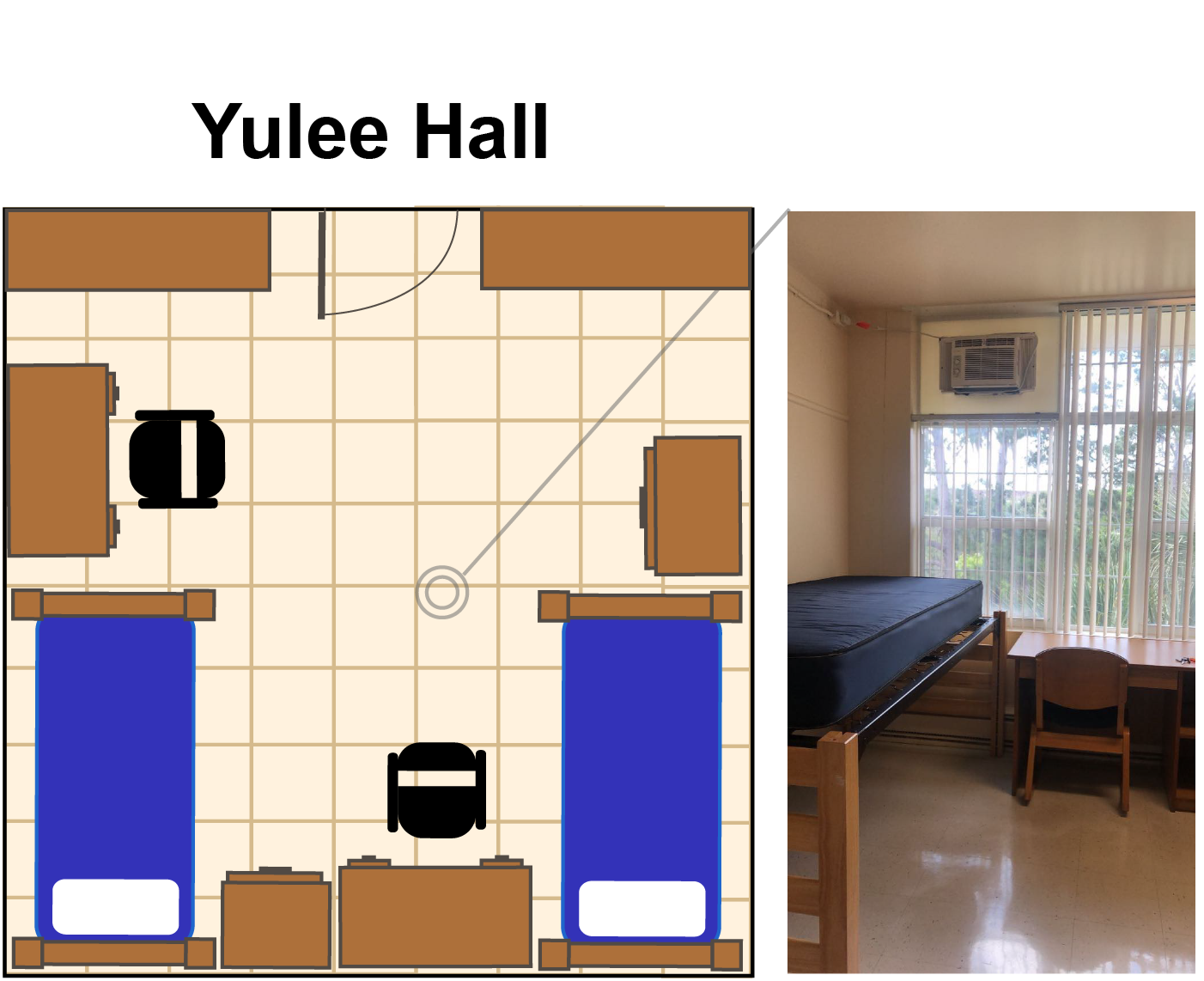
Yulee Hall is located on the eastern side of UF’s campus and sits near the College of Education, College of the Arts and College of Design, Construction and Planning. On campus, students are walking distance away from Broward Dining Center, Broward Recreational Center, Steinbrenner Band Hall and sorority row. It includes single, double and triple rooms.
The kitchens on each floor have a microwave and a stove, but students need to bring their own refrigerator for their room, according to UF’s housing website.
Yulee is home to the Global and Social Justice Living Learning Community. Per UF’s housing website, this LLC empowers residents to make the world around them more inclusive. Residents will have the chance to participate in events involving civic engagement and social justice.
Architect Guy Fulton designed Yulee Hall. Yulee, Mallory and Reid Halls were built as a result of UF transitioning to a coeducational university. The buildings were connected and built in the shape of a “Y” in 1950 to allow for common facilities for the women on campus, such as kitchens and offices.
The residence hall was named after Nancy Wickliff Yulee, wife of U.S. Senator D. L. Yulee. Yulee built a railroad from the Atlantic Ocean to the Gulf of Mexico that featured the first rail service to Gainesville.
Yulee Hall is expected to be renovated within the next decade. Lexi Cook, 19-year-old political science and public relations third-year, lived in Yulee Hall from Fall 2019 to Spring 2020 and said the hall has an older style to it.
“The aesthetic was very ‘70s-ish,” Cook said.
Pros:
“It was super close to the dining hall,” Cook said. “Easy for when I wanted a last minute dinner.”
“There was a large common room for the whole building in the basement that I used pretty frequently,” Cook said. “It had a projector, some TVs and games like ping pong.”
“My floor was social,” Yubin Kim said. “Pre-COVID, I would have family dinners with the people on my floor, and we would cook together and have movie nights.”
Cons:
“The laundry room was usually pretty busy, and people always forgot to take their stuff out of the washers and dryers,” Cook said.
“On our floor, there was only the kitchen as a communal space with limited capacity due to the pandemic,” McDonald said. “There wasn’t really much of a social scene specifically for hall.”
“The building was kind of old so there wasn’t a very good water fountain,” Cook said.
Reid Hall
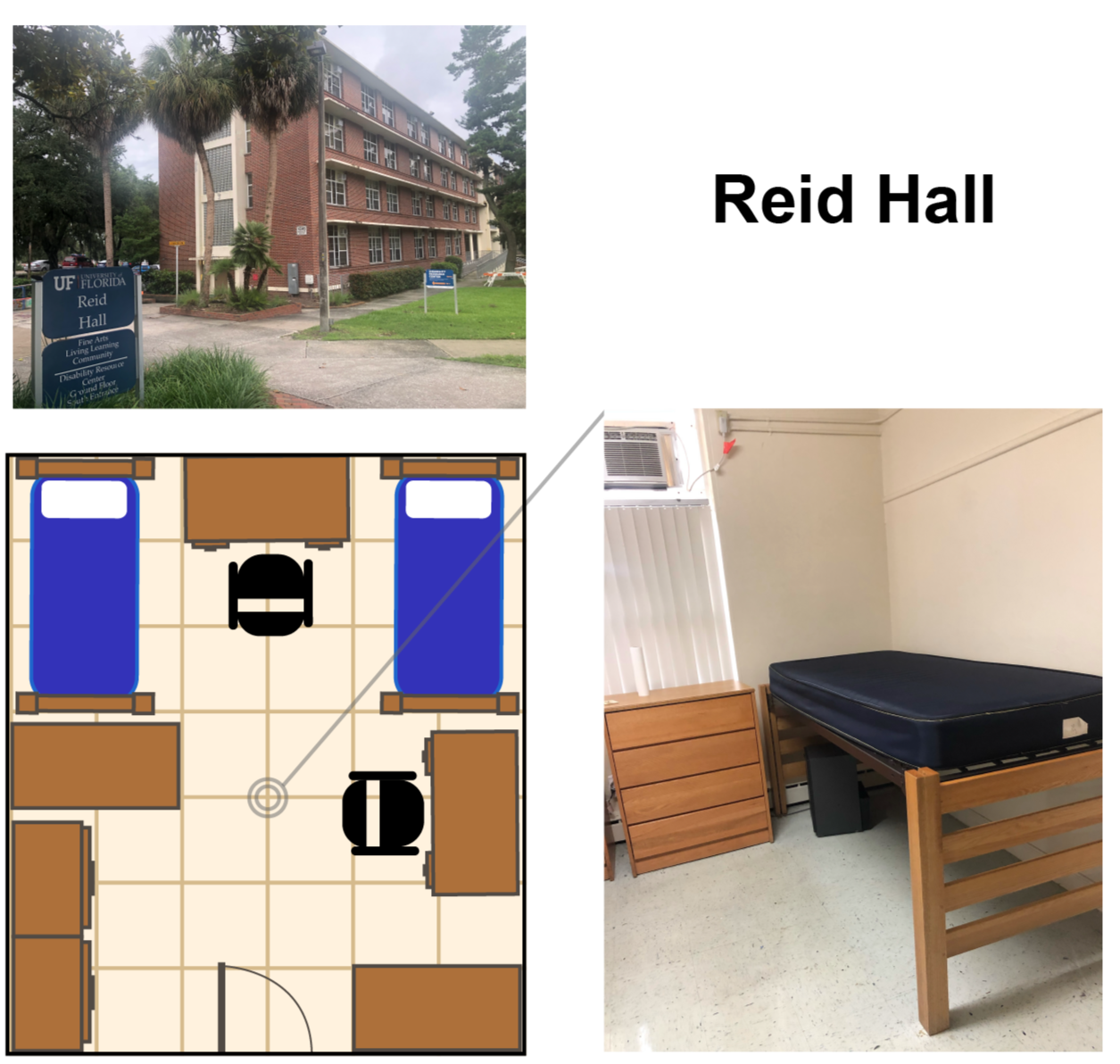
The constant sounds of students trying to perfect their melodies would be a bother at most other residence halls at UF. However, Reid Hall is typically occupied by music students attracted by its five-minute walk from UF’s School of Music.
Because of the communal spaces, it was easy to meet other music majors, Kyrsten Wehner, a 21-year-old UF music performance senior, said.
Reid Hall is where Wehner felt most comfortable practicing music inside the units, even into the night, she said.
“As a freshman, not knowing anybody coming in, that was a great place to start,” she said.
A large portion of tenants were sorority members, Wehner said.
“It was an odd combination of music performance majors and sorority girls,” she said. “You wouldn't think we would go together, but I met some cool people.”
Although music students are common residents of Reid Hall, any student can live there.
Oscar Santiago, an 18-year-old UF political science and criminology sophomore, said he never experienced anything unusual while living there, other than pranks.
“One of the residents taped the door of the RA,” he said. “They also, one time, dragged a whole table inside a shower.”
Reid Hall is part of the Yulee Complex which is across the street from Norman Field.
The complex was completed in 1950 and served as the first permanent residence halls for women. When it first opened, it had sewing rooms, hairdressing rooms and dining facilities separate from men.
Reid Hall is named after Mary Martha Reid, a Confederate Civil War nurse. She was married to Robert Raymond Reid, Florida’s fourth territorial governor from 1839 until his death in 1841.
Following her husband’s death, Mary Reid became a teacher in Fernandina. She later helped set up a hospital in Virginia to treat Florida soldiers in the Civil War.
Pros:
“It's super close to the music building and the College of Music,” Wehner said.
“Broward dining was right there. It was easy to get food,” Wehner said.
“They didn’t care if you practiced in your dorm,” Wehner said. “We had music through the halls at all times of the day.”
Cons:
“There's absolutely no parking by Reid unless you want to park in Norman,” Wehner said.
“The quality, I guess, was less than some of the other dorms that I was able to go and see in person.” Santiago said.
Mallory Hall
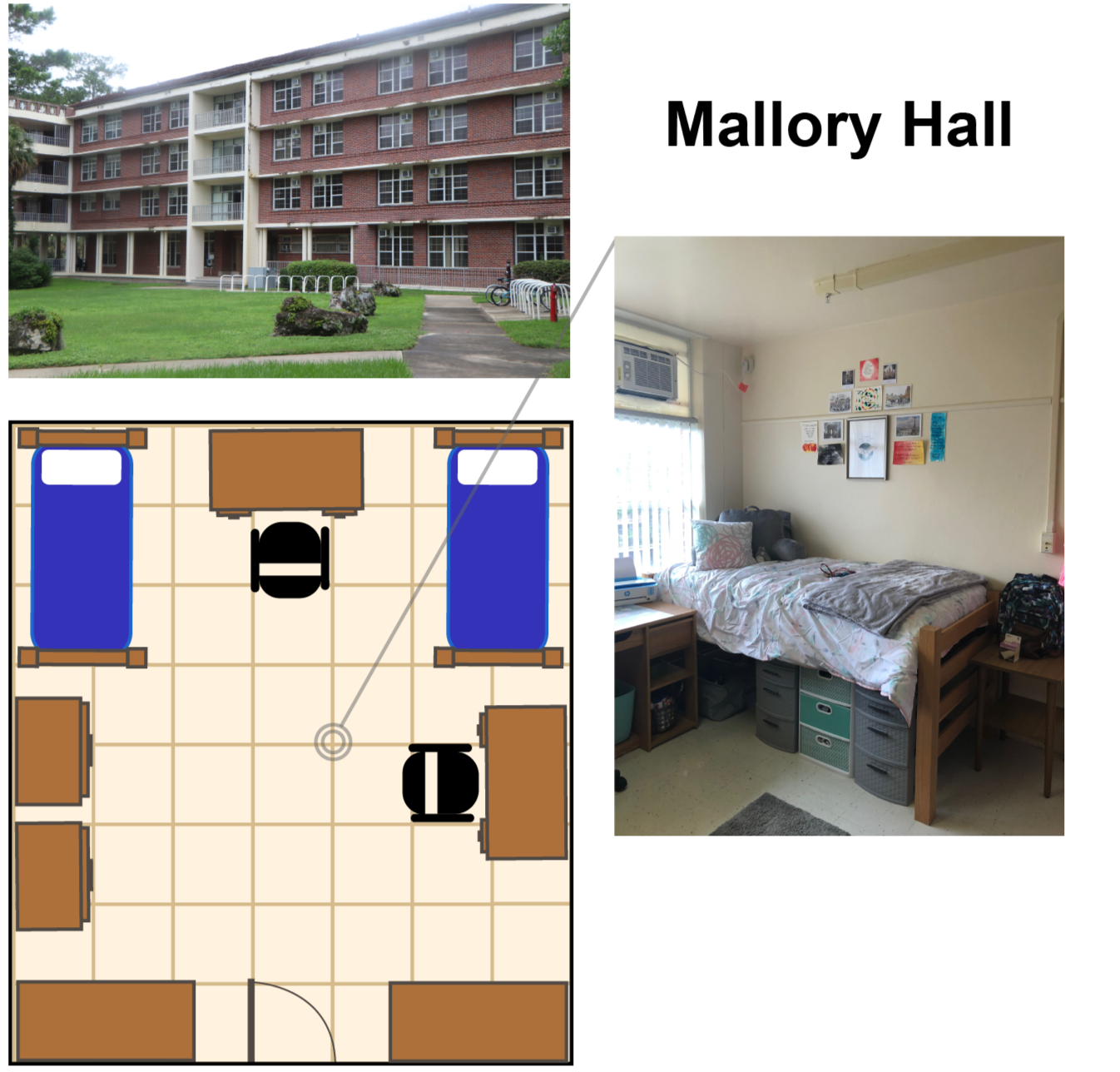
Mallory Hall is located in the Yulee area on UF’s campus, close to the College of Education, College of the Arts and College of Design, Construction and Planning. The hall includes single, double and triple rooms. Students are near Broward Dining Center, Broward Recreational Center, Steinbrenner Band Hall and sorority row. While the kitchens on each floor have a microwave and a stove, students need to bring their own refrigerator for their room, according to UF’s housing website.
Mallory Hall was designed by architect Guy Fulton. Mallory, Yulee and Reid Halls are all connected in the shape of a “Y.” The three buildings were combined back in 1950 to allow for common facilities such as kitchens and offices.
The residence hall was named after Angela Mallory, wife of U.S. Senator from Florida Stephen R. Mallory. Mallory, Yulee and Reid Halls were built in 1950 to accommodate UF evolving into a coeducational university, becoming the first permanent halls for women at UF. When they were built, the halls included sewing rooms, hairdressing rooms and separate dining facilities from the men on campus.
While the hall is no longer exclusively for women, UF sophomore Chris Kohlbeck, UF sophomore who lived there from Fall 2020 to Spring 2021, said the hall was still filled with mostly women.
“It was basically an all-girl dorm,” Kohlbeck said.
The male floor was only half of the first floor because the library was on the other side, she said.
Mallory Hall was renovated in 2006, and more renovations are scheduled within the next decade. Kohlbeck said the bathrooms were renovated when she lived there last year.
“Mallory specifically had renovated bathrooms, which was very nice because the showers were surprisingly always very warm,” she said. “It had really good shower pressure.”
Another distinct feature of the hall is a balcony connected to the kitchen.
“I would sit out there every day,” UF sophomore Alyssa Auderer said.
Pros:
“I liked that there were two bathrooms in the hall so that you were never waiting for a bathroom,” Auderer said.
“It was good for sorority recruitment because it’s a short walk to sorority row,” Kohlbeck said.
“There were definitely a lot of events for the Yulee area and for Mallory Hall,” Auderer said. “They had a lot of different arts and crafts, yoga and some online games and trivia.”
Cons:
“It was difficult to make command strips stick to the walls,” Powell said.
“The rooms are definitely older,” Kohlbeck said.
“The built-in air conditioner in the window is very loud and it’s very cold,” Kohlbeck said.
Broward Hall
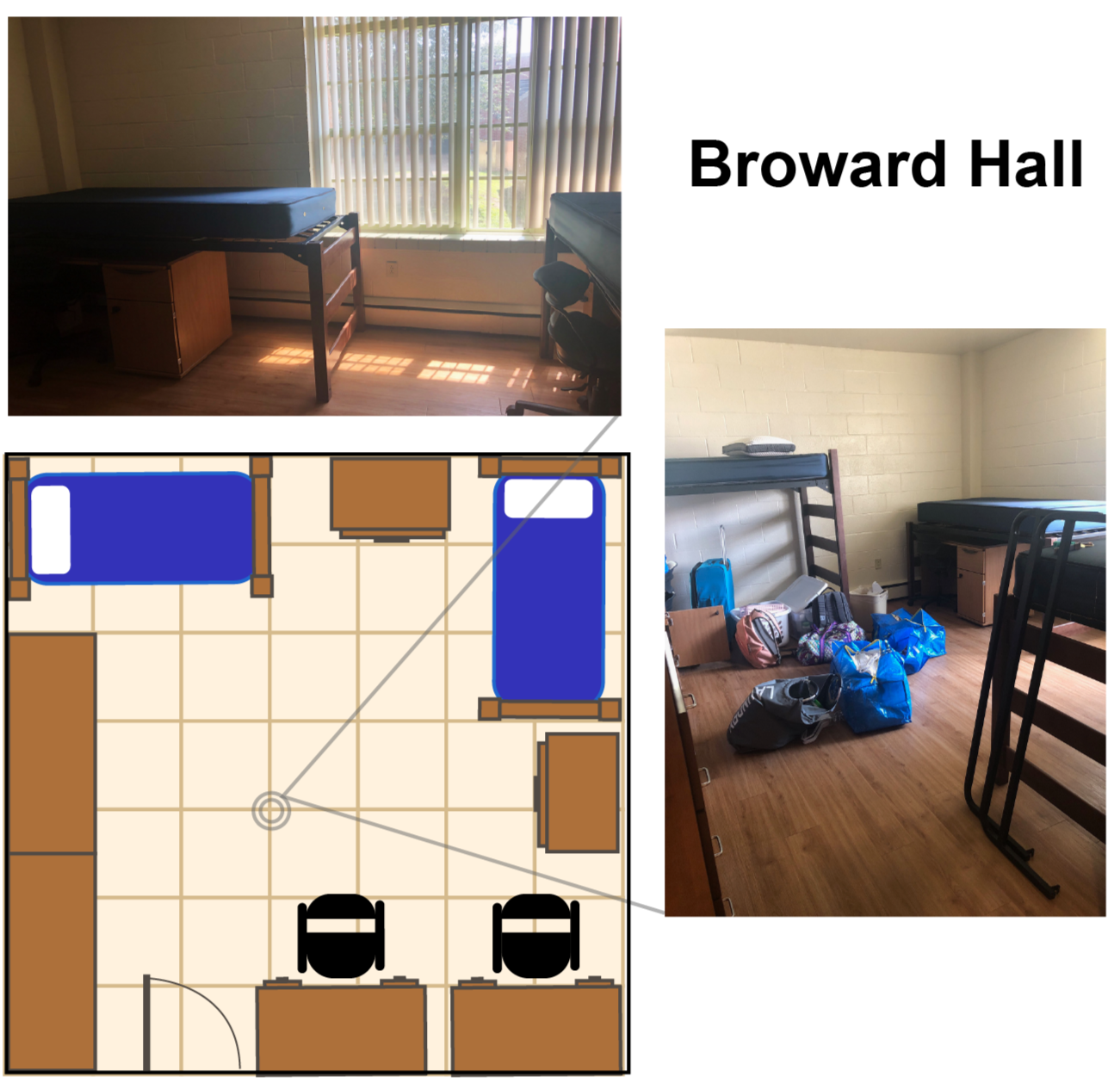
Known for its convenient location on campus, Broward Hall is about a five-minute walk away from Turlington Plaza, the Reitz Student Union and sorority row.
With a capacity of 690 residents, students can choose between single, double and triple rooms. The common area kitchen on each floor includes a microwave, range and stove, but students should bring their own refrigerator, according to UF Housing and Residence Life.
Built in 1954 to accommodate a growing number of female students, Broward Hall was named after Annie Douglass Broward, wife of former Florida governor Napoleon Bonaparte Broward. After UF’s official acceptance of women, the Guy Fulton Brutalist-style building was the last women’s residence area to be designated coed in 1972.
Julia Palomba, 20-year-old junior biology major, said living in Broward Hall was a great way to start her freshman year.
“If you like your alone time it can be a little more challenging, but it was such a character building experience,” Palomba said. “Having a roommate or two, you always have someone to do something with.”
While Broward was a good introductory hall, Alessandra Sorica, 21-year-old senior health education and behavior major, said students with higher budgets should check out other residence halls.
Pros:
Broward could not be in a better location, Palomba said. She rolled out of bed at 9:30 a.m. for her 9:35 a.m. class, making it on time.
“The library was always quiet, so you could have a place to study — always,” Sorica said.
The sports complex is closeby, and there’s a nice parking lot if you have a scooter, Sorica said.
Cons:
Some triples are converted doubles and cramped, Palomba said. She suggests not to bring too much and take advantage of storage space under the bed.
Palomba hated the AC thumping loudly while she was studying, and the rooms were cold in the winter.”
To beat crowds, Sorica suggests taking midday showers and doing laundry on weekdays.
Rawlings Hall
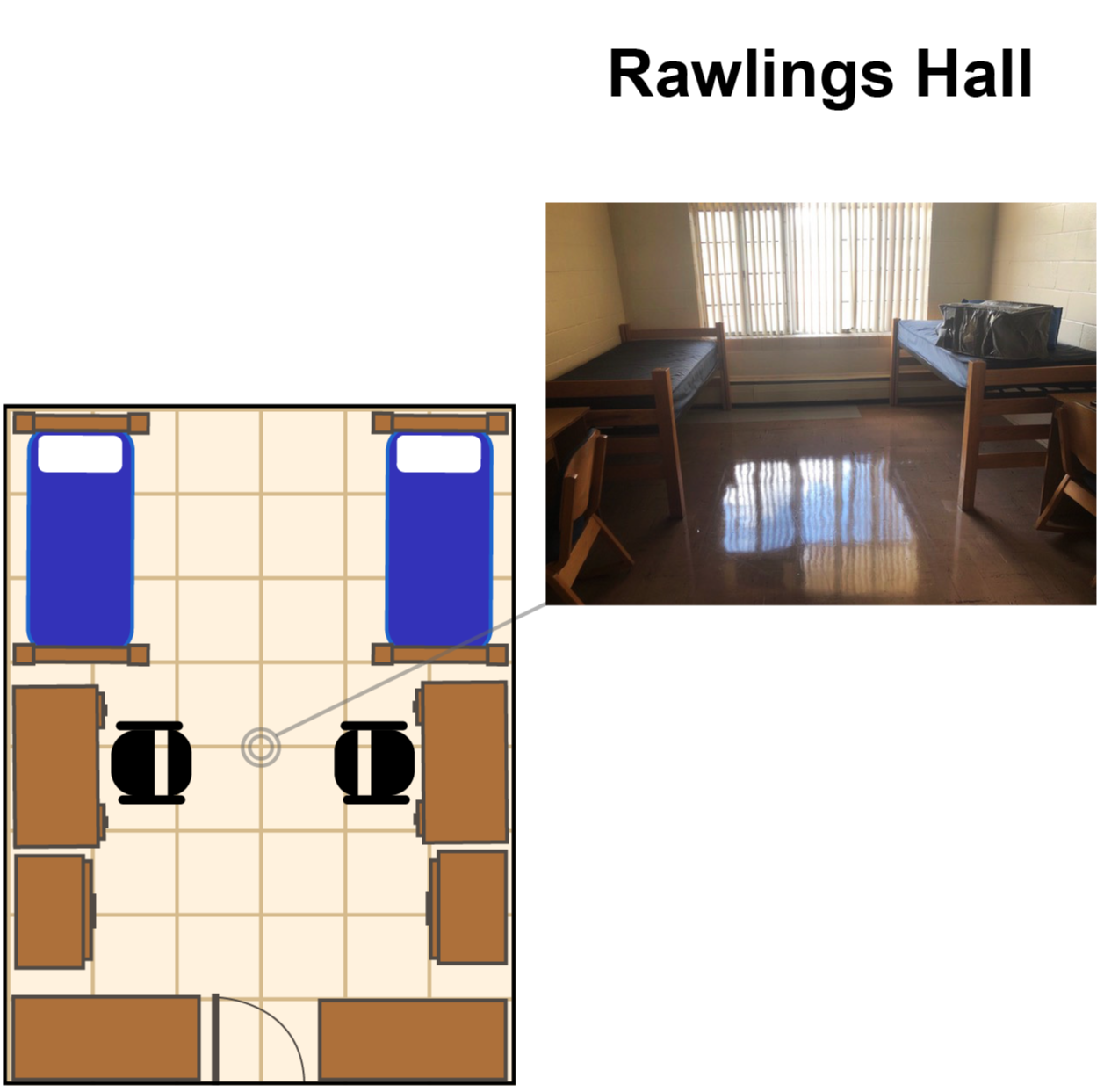
Nestled behind a bus stop, the entrance to Rawlings Hall lies almost hidden beneath the cover of arching awnings.
First opened in 1958, the residence hall offers mainly double rooms and communal bathrooms. Residents can also live in a single room, a two room quad or a double suite, according to the Housing & Residence Life website. Roughly a three-minute walk from Marston Science Library and Turlington Plaza, Rawlings is located near the heart of campus.
Each floor has its own kitchen area, including a microwave and stove. Outside its front entrance, students can find a P.O.D. Market with a Subway inside.
UF plans to demolish the residence hall in 2023, and its bus stop is now closed indefinitely due to road construction.
The residence hall is named after Marjorie Kinnan Rawlings — an author known for her novel “The Yearling.” Originally, Rawlings was home to female students only, but it became coed in 1972, according to “A History of University of Florida Residence Facilities.”
Madelyn White, a 20-year-old UF finance junior, said the building’s age gave Rawlings charm.
“It’s the equivalent of seeing old composites at a sorority house,” White said. “The history is in the building.”
Pros:
“I probably ate that Subway a hundred times,” Evan Combs said.
“I kept [my scooter] right next to Rawlings in that parking garage,” White said.
“You really never had to worry about going to the bathroom or trying to shower,” Aedyn Gorenberg said.
Cons:
“You need to be prepared for the fact that you’re going to be living in a very old dorm,” Gorenberg said. “It has its times when you’re going to see cockroaches.”
“It was really kind of a far walk to get to the car,” Combs said.
“It’s like 70 degrees at all times, and you could not turn it up because you’d get mold,” Combs said.
Infinity Hall

Infinity Hall is one of UF’s newest residence halls and is located next to UF’s Innovation Square, just two blocks from the Plaza of the Americas.
Originally opened in 2015, the hall is close to the College of Business, College of Arts, College of Education and the College of Liberal Arts and Sciences. Infinity Hall’s location gives students the opportunity to browse off-campus dining as well as explore local businesses such as Opus Coffee, Midpoint Park and Eatery, and Piesanos Stone Fired Pizza.
The residence hall includes single, double and super suites. There is a common area kitchen on each floor which contains a microwave/convection oven. The suite-style rooms are favored because of the non-communal bathrooms, said Meghan Gramling, a 20-year-old marketing junior.
Former resident assistant Kyle Cooper said residents can upgrade to a super suite that provides a living room and a refrigerator. There is a resident assistant on each floor who fosters communication, safety and a social environment.
Mady Dorworth, a 20-year-old elementary education senior, said there wasn’t much of a community environment.
“Off-campus means sometimes you didn’t have the ‘on-campus’ experience,” she said.
Cooper said the front desk and maintenance staff are friendly and happy to help solve any inconvenience a resident may experience. Additionally, he said the janitorial staff cleans the bathrooms weekly.
Gramling said Infinity Hall stood out from other residence halls because it’s one of the newer options.
“[It] had study rooms and large common areas,” she said.
The lounge areas are connected to the kitchens, Cooper said.
There are laundry rooms available for residents to use on floors two through five, however, they weren’t always accessible.
“The laundry room experienced relatively frequent floods, which forced residents to use laundry rooms from the other floor,” Cooper said.
He said students will not have to worry about safety, as Infinity Hall provides maximum security with cameras, locked double doors leading to the floor hallway and a main door to each suite.
Pros:
Only sharing a bathroom with one other person was a plus, Dorworth said.
Cooper said Infinity is convenient for those who are disabled, providing a ramp to enter the building as well as a suite that accommodates one’s disability within the shower area
A trash chute area on each floor replaces the need to remove garbage via dumpster, Cooper said.
Cons:
The kitchen area does not provide an oven, and instead of a stove, there is at least one hot plate to cook meals, Cooper said.
Cooper said there is limited parking outside of the building. He said it is common for students to obtain parking passes from the Continuum Apartment.
Not directly on campus, however, Cooper said the walk to campus isn’t too inconvenient.
Murphree Hall
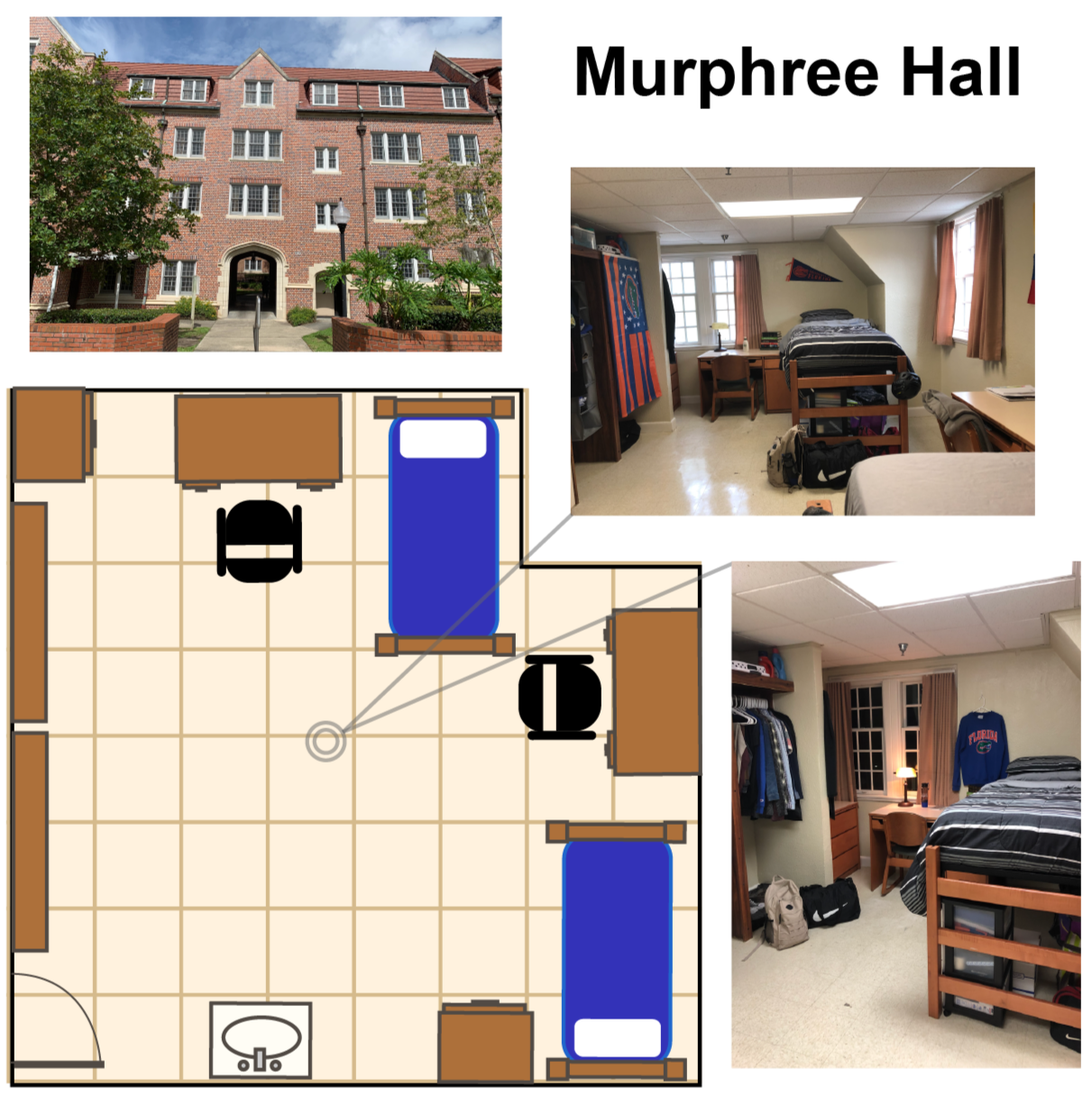
Murphree Hall is a three-and-a-half-story residence hall, with open passageways and individual entrances facing the courtyard. The hall is located in the Murphree Area across the street from halls Thomas, Sledd, Fletcher and Buckman, which together form the shape of a “U” and an “F”.
The 348-person hall includes the room options of doubles, triples and two-room doubles and triples, which consist of two separate rooms with one exit, according to UF’s Housing and Residence Life website. Each room provides a sink and each floor has a kitchen with a microwave and stove.
“The coolest thing about living in Murphree is it’s literally like living in a castle,” Zachery Utt, Fall and Spring Murphree senator, said.
Sitting in the corner of campus, the hall is in close proximity to the HUB, Reitz Union and Student Recreation and Fitness Center.
“There’s a lot of memorable experiences,” Nikita Mirsaderov, a 22-year-old microbiology and cell science senior, said. “It’s right next to every key location in the university. It’s right next to the stadium, Study Edge, Midtown, all of your classes.”
Located in the historic district of campus, the 1939 dormitory was home to soldiers in training during WWII and families of veterans who attended classes at UF. During the Great Depression, the hall was named after UF’s second president Albert Murphree and designed by architect Rudolph Weaver in the Collegiate Gothic style.
The hall contains several floorplans, which allows each room to have different shapes and dimensions. The floors are separated by gender, and a key card is required to access certain floors.
Pros:
“When you live in an area surrounded by a bunch of plants, that’s beautiful, it makes you feel better and makes you more likely to go outside and talk to other people and participate in events and feel like you're part of something,” Utt said.
“The best part about Murphree Hall in comparison to Hume is how thick the walls are,” Mirsaderov said.
“A nice thing about Murphree Area, as well, is they do a lot of outdoor events,” Grace Shoemaker, 20-year-old chemical engineering junior, said. “We’d go out and do s'mores and usually projector movie nights, and so those were some of the things that LLC would host.”
Cons:
“WiFi is great inside of the dorms and the commons and the library, it can just be outside in the middle of the courtyard it gets a little bit more difficult to get service sometimes,” Shoemaker said.
“When you have to park there on a Friday when everybody's going home or you have to be lucky or you need a Red 1 pass to park in front,” Mirsaderov said.
“Every single room is incredibly different,” Utt said. “Just because you read about one person having one thing doesn’t necessarily mean that you will.”
Buckman Hall
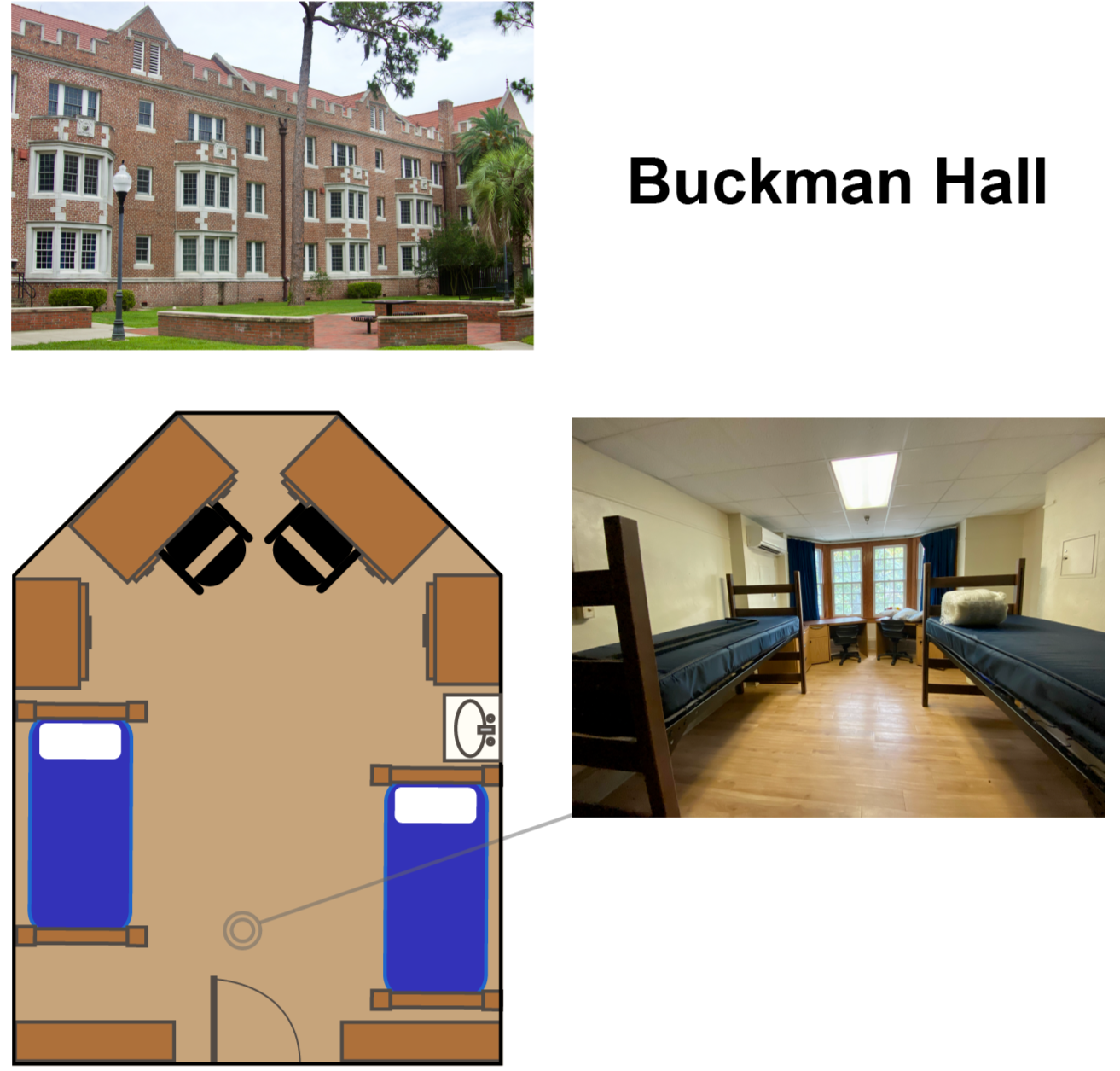
Named after Henry H. Buckman, a Florida Legislature member who authored the act that created the University of Florida, Buckman Hall is rich with history and gothic-style architecture. It was opened in 1906 as one of UF’s first buildings.
Buckman Hall on UF’s east campus is a part of Murphree Area and is within a 15-minute walk from the Reitz Union, Ben Hill Griffin Stadium, Midtown and more.
With a capacity for under 140 residents, Buckman Hall includes single, double and triple traditional-style rooms, but no two rooms are the same, according to the university website.
Throughout the years, the hall has seen rooms converted to faculty offices and classrooms and has been a site where soldiers lived during WWI, according to the university website. It was added to the National Register of Historic Places in 1974.
Buckman Hall has communal bathrooms, lounge areas and kitchens, but students must provide their own in-room refrigerator, according to the university website. Air conditioning was added to the hall in 2014, Sara Tanner, the marketing and communications director for UF Student Affairs, wrote in an email.
Pros:
“Really close to The Hub and classes and everything,” Olivia Feller said.
“The bay windows are beautiful rooms,” said Grace Shoemaker.
“I loved that it was a lot older,” Asha Clarke said. “I’m a big fan of history.”
Cons:
“It can be pretty loud because you’re right across the street from Midtown,” Shoemaker said.
The laundry room is not in Buckman Hall, Clarke said.
Feller said she wished the hall was renovated and had updated infrastructure.
Fletcher Hall
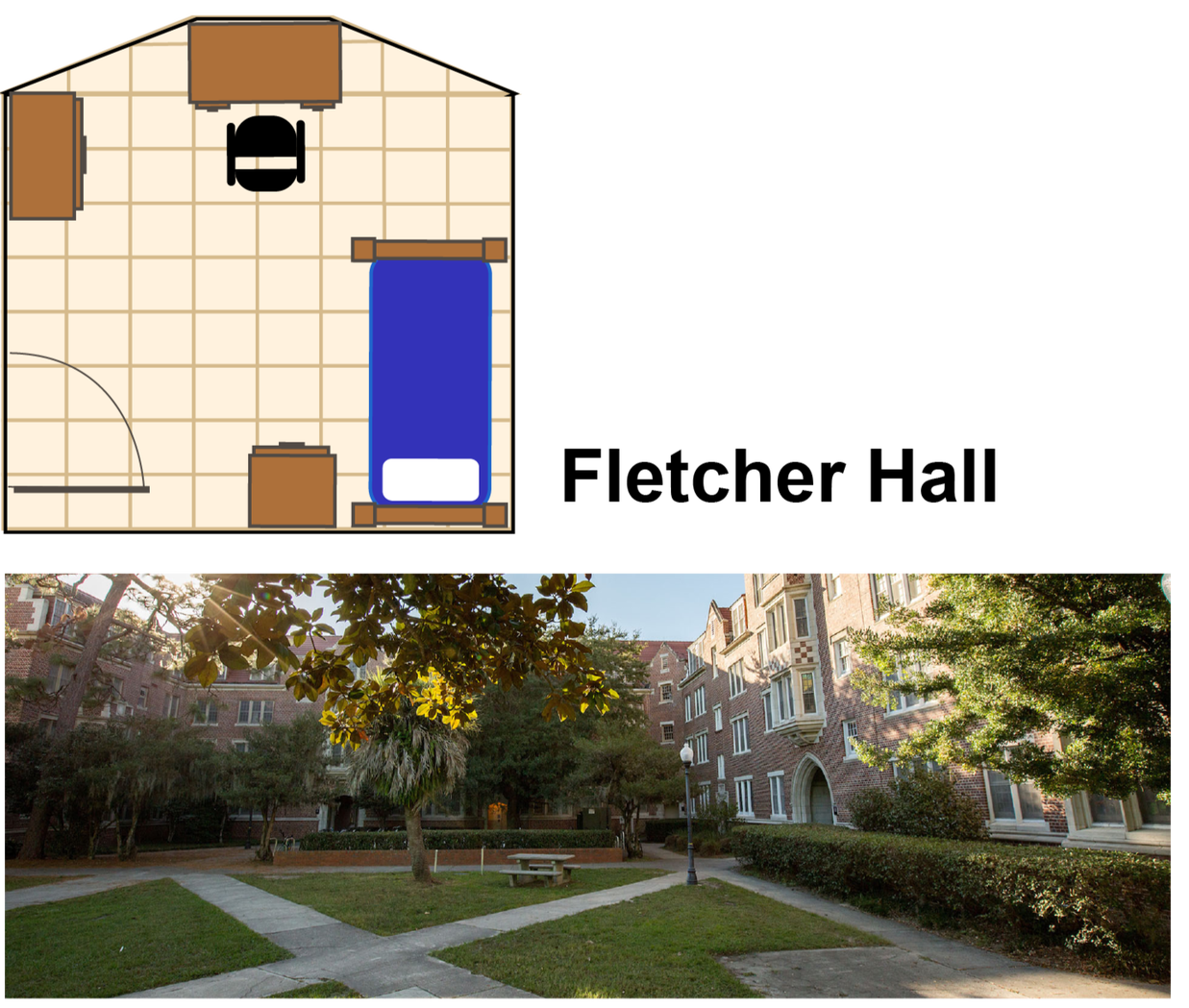
Fletcher Hall is a residence hall located in UF’s historic district. Hogwarts-style arches and Collegiate Gothic-style architecture make up the Murphree area. The hall, built in the late 1930s, was initially named North Hall.
Fletcher Hall is located at the northeast end of campus along University Avenue and is walking distance from the Student Recreation Center, the Hub, swimming pools and libraries. It’s closest to the College of Liberal Arts and Sciences, College of Journalism and the College of Engineering.
The building was built after the Great Depression using federal funds in response to a housing shortage on campus. It provided jobs under the Work Progress Administration, which focused on fixing the unemployment rate after the depression.
Xinyi Ge, a 21-year-old statistics fourth-year, said Fletcher Hall’s location was the best part because of how close campus, downtown, midtown and the fitness center were. Ge, who lived in the residence hall from Fall 2019 until Spring 2020, had crutches for a PCL ligament foot injury and found Fletcher Hall’s location convenient to get to classes and events all around her.
“I enjoyed crutching around Fletcher Hall and the center of campus very much,” Ge said.
The historic hall prides itself on providing a traditional experience. However, due to this, there are no elevators in Fletcher Hall. For Ge, using the stairs with crutches was a challenge, from which she developed what she called “crutch-running” skills.
She developed the ability after about two months’ practice and said she unofficially broke the Guinness World Record for the females’ 5K on crutches.
The location was also convenient for Ashley Memmolo, 20-year-old zoology senior, who lived there briefly in Fall 2020. Memmolo said food, classes and nightlife were all in close proximity during her time at Fletcher Hall. She said she appreciated the beauty of the outside and the environment of the historic Murphree area.
Fletcher Hall offers single, double and triple rooms. There are six bus routes that circle around campus and Gainesville with stops near the hall. Varying room sizes and layouts is a distinct feature of Fletcher Hall and the Murphee area.
Fletcher has shared bathrooms on each floor and does not have a sink in the bedroom.
Fletcher Hall offers a laundry room, lounge room, movie room and shared kitchens. There is also a recreation area with a pool and ping pong tables. Ge said she almost fell asleep on the couches in the lounge room because they are so comfortable.
Pros:
“It is in [the] Murphree area with some of the nice scenes and night lights around,” Ge said.
“Most of the roads in Murphree area [are] flat, which made moving around way easier especially for someone usually biking,” Ge said.
“There’s a piano and a room of big soft couches with TV in the Murphree area lounge so that a lot of us can have fun playing music, watching TV, gaming there,” Ge said.
Cons:
“It doesn’t have an elevator,” Ge said. “It can be a problem for some people moving in/out while having a lot of heavy stuff. And it can be a bit tricky for people who are disabled on crutches/wheelchairs/knee scooters to get to their rooms up/downstairs,” Ge said.
“The walls are thin,” Ge said.
“I lived on the top floor and the ceilings were so slanted it made me feel like I was in an attic,” Memmolo said.
Sledd Hall
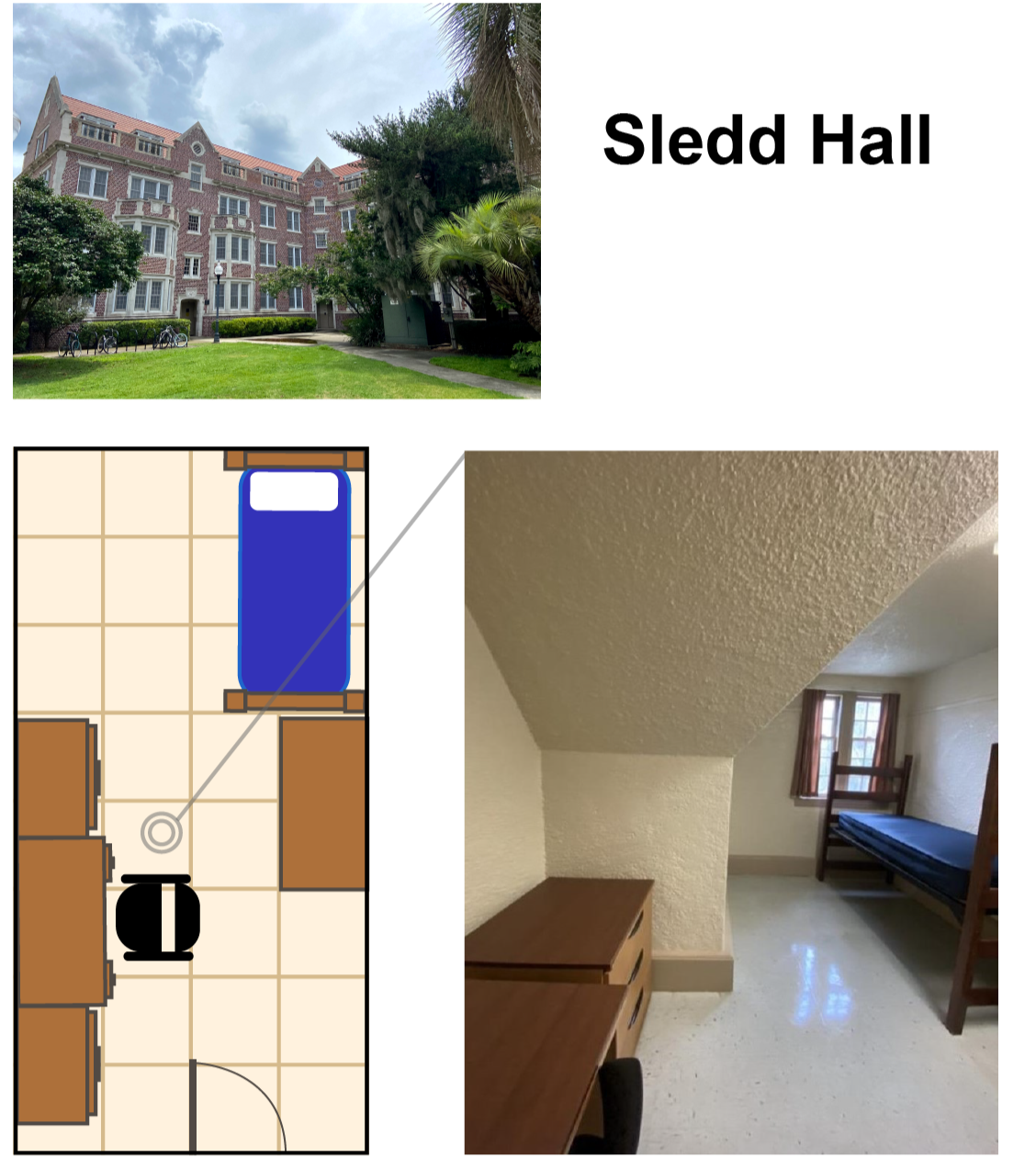
Sledd Hall is located in the Murphree area on the northern edge of the UF campus, just off University Avenue. Students in Sledd Hall have easy access to the Student Recreation and Fitness Center, the UF Student Health Care Center, Library West and the Plaza of the Americas. The residence hall includes single, double, triple and quad rooms.
Lauren Johns, an animal sciences junior, lived in Sledd Hall her sophomore year and enjoyed being centrally located.
“It is a beautiful area equal distances from both dining halls,” she said.
Sledd was built in 1929 and designed by architect Rudolph Weaver. It branches off into three long segments, and each segment contains a collection of rooms, communal bathrooms, and exits, with one kitchen located near the center point of the three branches of the hall. Usually the first and third floors house male students while the second and fourth floors house female students.
The residence hall was named after Andrew Sledd, the first president of UF who served from 1905 until 1909. It is considered to be a part of the UF Campus Historic District, a group of historically significant buildings that UF plans to preserve over time.
Maxwell Hutchinson, a statistics senior, said despite the beauty of the residence hall, its age was very apparent.
“It is one of the oldest buildings on campus, and this shows with the lackluster plumbing. The rooms can be smelly and there can be frequent bathroom issues. Also, the sounds from all of the bars across the street can be quite loud,” he said.
Pros:
“Sledd has so many entrances that all connect, so you can enter one door and walk through the building to your section. This came in handy during the rainy, cold season,” Johns said.
“I enjoyed the size of my [double] room. It made online school a lot more comfortable for me as I didn’t feel claustrophobic,” Johns said.
“The dorm was close to my classes and also close to midtown. It was also a relatively less expensive dorm, because my single costed about the same as a Buckman double,” Sage Grafe said.
Cons:
“There are no elevators, so if you live on the fourth floor, it is a hike,” Johns said.
“If you live on the fourth floor, the kitchen is a bit small,” Johns said.
“Sledd Hall has horribly small kitchens, which are about the size of closets. It is moldy, musty, and dirty, especially in the hallways. My single room was a bit bigger than a closet, and the bed was made into a bunk bed just to fit all of the UF-provided furniture,” Grafe said.
Thomas Hall
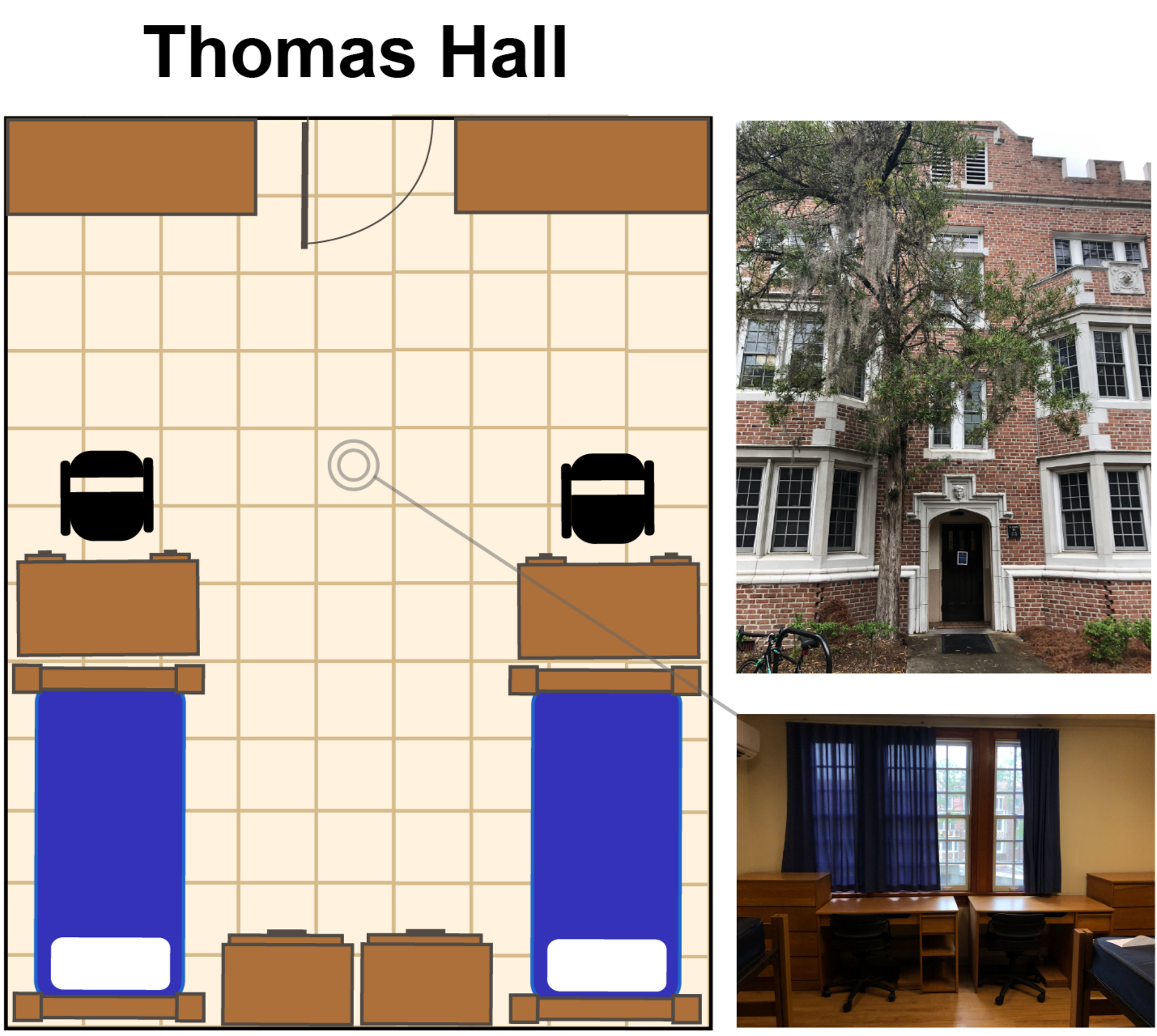
Thomas Hall is located in the Murphree Area of the historic district of UF. It’s just off West University Avenue and a five-minute walk from Ben Hill Griffin Stadium. It’s also near major campus spots such as the Reitz Union, Academic Advising Center, the Student Recreation and Fitness Center and the HUB.
Thomas Hall offers single, double, triple or quadruple rooms with shared kitchens and bathrooms on each floor. It includes a lounge area, a movie room, a conference room, and recreation opportunities such as a pool table, a ping pong table and other sports equipment.
The hall opened in 1906 and is listed on the National Register of Historic Places. It was named after William Reuben Thomas, a Gainesville mayor who donated 517 acres of land and $40,000 from the city of Gainesville to the Florida Legislature with the agreement that UF would be built on those acres.
In 1906, the hall housed administrative offices in the north section and classrooms, laboratories and an auditorium in the middle section. Students paid $2.50 a month to live in Thomas that year.
Leah Rogers, a 20-year-old criminology and psychology major with an emphasis in behavioral neuroscience junior, said she loved how each room had a sink in it.
Cheyenne Acker, a 22-year-old UF graduate who majored in biology and psychology, stayed in a single room at Thomas Hall from Fall 2018 to Spring 2019. She appreciated the close proximity to major spots in UF such as The Hub, a food court and a major bus stop on Stadium Road.
Andrew Dang, a 20-year-old UF Biology senior who stayed in a double room at Thomas Hall from Fall 2018 to Spring 2019, said the rooms have a good amount of space.
Pros:
“One pro is location. You are close to midtown, The Hub, Marston Science Library and Library West,” Acker said.
There are only 12 residents on each floor, which means restrooms aren’t as crowded as other halls, Rogers said.
“There are sinks in each room. You can brush your teeth in your room instead of having to walk down the hall,” Rogers said.
Cons:
Thomas Hall lacks enough space for everyone to gather socially or for RA meetings, Acker said. “We sometimes had to all squeeze in the kitchen, but that was only a couple of times a semester,” Acker said.
It’s humid inside the residence hall, Acker said. However, she said you can fix that with a dehumidifier.
“It’s far from dining halls if you’re on the meal plan,” Dang said.
Tolbert Hall
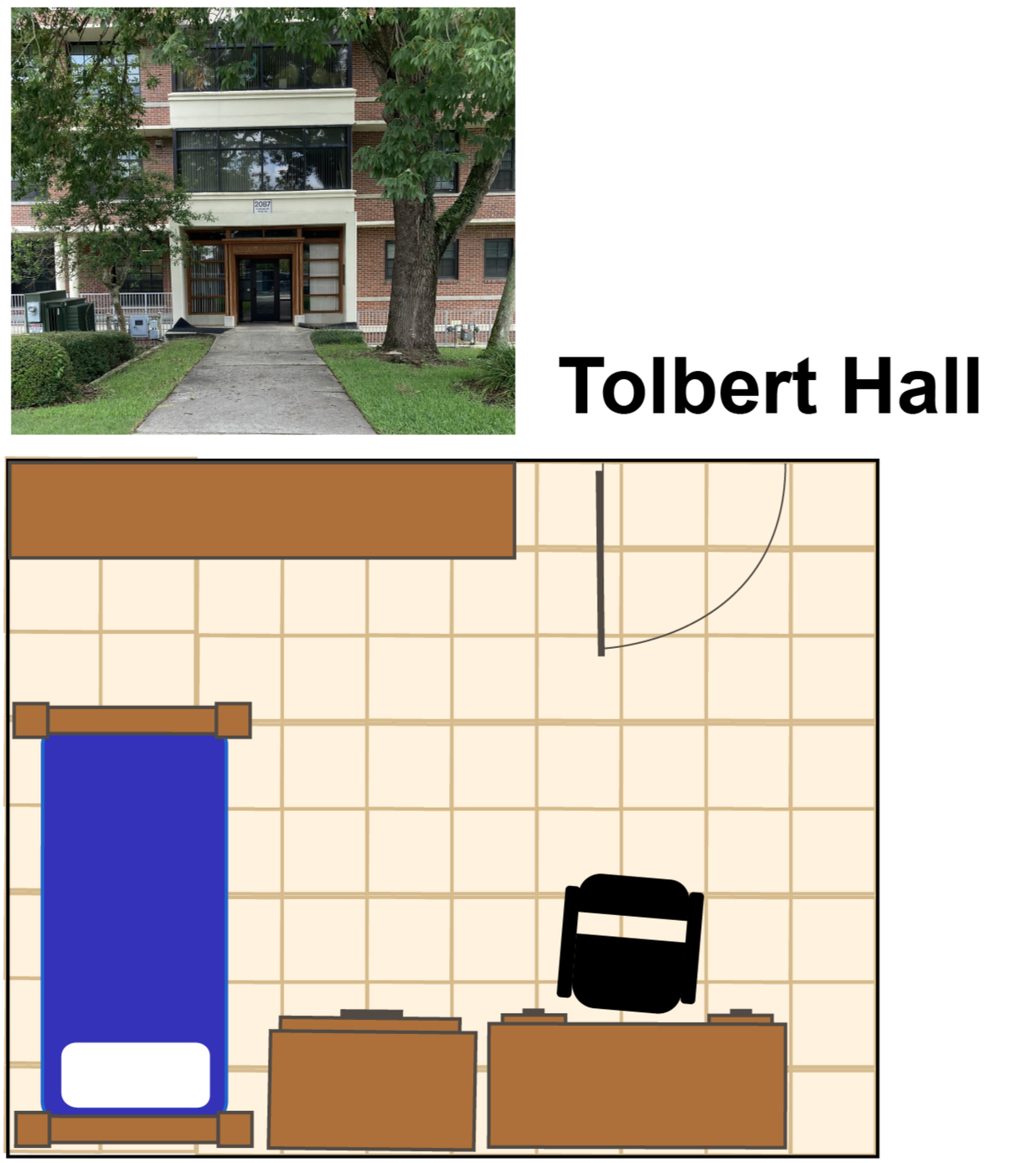
Tolbert Hall is located in the northeast section of campus near the Gator Corner Dining Center and Ben Hill Griffin Stadium.
The residence hall opened its doors in 1950 and was named after Benjamin Tolbert, the dean of students from 1928 to 1937. It has a modified Collegiate Gothic architectural style from designer Guy Fulton and houses faculty, students and the UF Army Reserve Officers’ Training Corps.
Tolbert Hall can house up to 252 students.
Richard Mazzula, a 21-year-old mechanical engineering junior who lived in the hall his freshman year, said he liked the close proximity to the Reitz Union and Gator Dining. However, he did not like the social environment.
“Besides like two people I really never met anyone else in Tolbert,” Mazzula wrote in a text message.
Neha Mathew, a 19-year-old psychology sophomore, also said the location was a benefit of living in Tolbert, but she felt isolated because she wasn’t part of the ROTC.
Tenders, or Boots, the campus cat who resides in the Tolbert area, offers residents in the area a companion to destress from school.
“When everyone’s on a run or super stuck in their heads with whatever it may be, [Boots] walking by always offered an “aw” and a smile to make our day better,” Mathew wrote in a text.
Pros:
“My RA was super sweet, and I loved the area as well! It’s super close to the stadium, Reitz, and Gator Corner,” Mathew said.
The ROTC living-learning community and nearby sports facilities are benefits of living at Tolbert, Kayla Norwood, a 19-year-old geology sophomore, said
Cons:
“The common area was rather small, and so no one really ever went in it,” Mazzula said.
“I did feel a bit out of place because most people were [ROTC,] but I love the friends I met living there,” Mathew said.
Weaver Hall
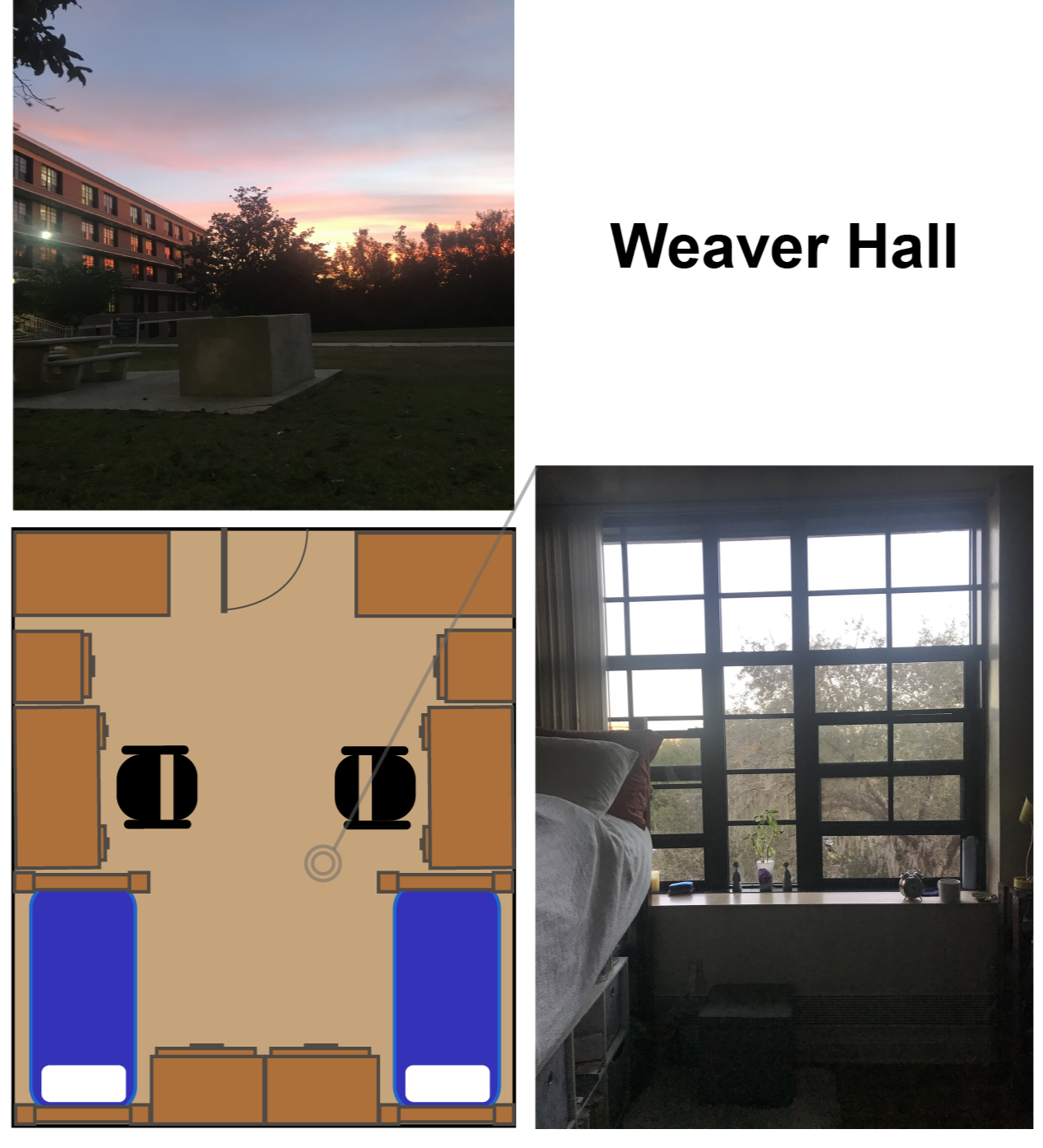
Weaver Hall offers single, double and triple rooms. It was built in 1952 and holds a capacity of 172 students.
It is near several colleges, including the College of Engineering, College of Journalism and Communications, College of Human Health and Performance and College of Liberal Arts and Sciences.
In Weaver Hall, international students are paired with American roommates with the intention of learning and exchanging cultural experiences and practicing foreign language skills.
Eleni Stilian, a 20-year-old international studies and food and economics third year, lived in Weaver Hall her freshman year, Fall 2019 to Spring 2020, before the COVID-19 pandemic forced students home.
She said although Weaver Hall was far from her classes, being next to the stadium and the O’Connell Center was convenient when attending sports events.
Stilian said the amenities surrounding the hall, such as the Graham Area pool and Graham Area P.O.D. Market, were less crowded alternatives than other areas on campus.
“The Graham Area pool is also not super crowded ever,” she said. “You have plenty of space. You never have to fight for a chair, which was really great for the hot days there as well.”
Weaver houses The International House, a multicultural learning community where UF international students can reside. Stilian said this gave her an opportunity to make unique friendships, including her roommate from London.
“All of my friends were international students there,” she said. “You’re able to make so many new friends from so many new places there. It's really interesting to be able to live in such close quarters with somebody from a country like the UK.”
Macs Burke, a 21-year-old chemical engineering fourth year, has lived on campus for three years now. After hanging out with his friends who live in Weaver Hall, he said he is moving there for his final year.
“That’s the place I would have rather lived than any other place on campus,” he said.
Burke said he enjoys the location’s convenient access to the Reitz, the buses and the dining halls. He also enjoys the in-house amenities located in the basement of Weaver Hall.
"We have a huge, huge projector screen, anyone can connect a laptop to, pool table, ping pong table, you can rent out just a lot of space for you to play board games, there are card games or whatnot,” he said.
Lauren Novak, a 20-year-old health science third year, said even though Weaver Hall has a fun, social atmosphere, she found the dormitory to still be a “very conducive environment” to focus on her studies.
Novak said any cons to her living situation were no more than the “conventional experience of living in a freshman dorm,” such as sharing a bathroom with 10 to 15 other people and constantly having someone in your living space.
“With both of those experiences, I would say that it was definitely an awesome growing experience even though I would formerly put those down as cons. They really helped give the authentic college experience for sure.”
Pros:
“It’s the sociable dorm on the west side of campus,” Burke said.
“There is an age range from freshman to graduate students,” Burke said.
“The location is pretty good. Being so close to the Reitz and dining hall,” Burke said.
Cons:
“It’s a little bit farther from some of my classes and the libraries,” Burke said.
“It was a bit of a unique experience sharing a dorm with a roommate rather than a suitemate. Having someone there 24/7, all the time and going to bed with somebody in your room every night,” Novak said.
“Each floor has two bathrooms, you usually end up sharing that bathroom with 10 to 15 people,” Novak said.
East Hall
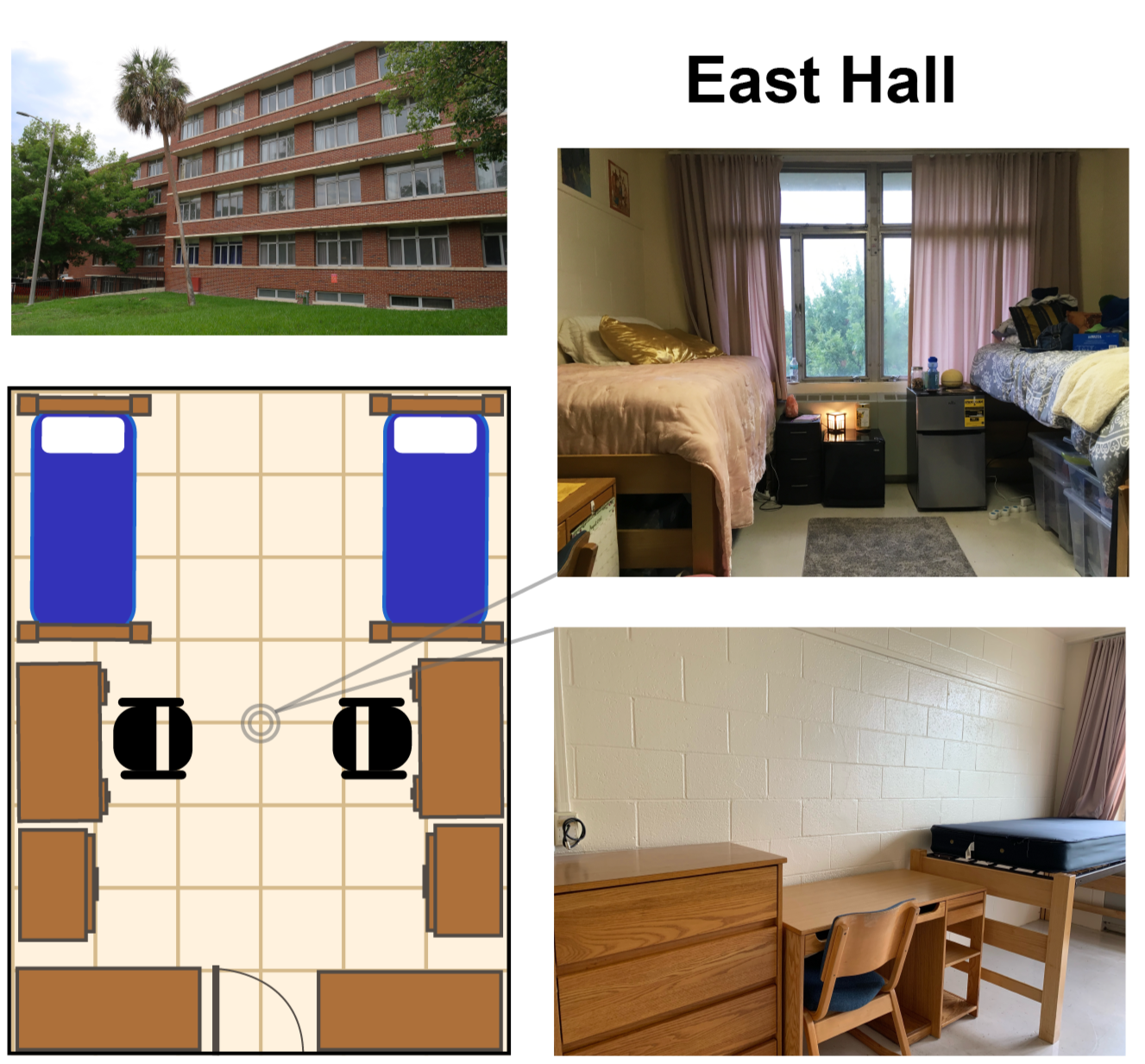
East Hall, now the home of the engineering living-learning community, first opened in 1961. The residence hall is one of seven UF residence halls designed by Guy Fulton, former state architect of Florida, as a part of an $8.5 million construction project.
In 1979, East Hall was appointed as the first honors-only residence hall. The honors program was then moved to Hume Hall when it opened in 2002.
East Hall was renovated in 2008, with $4.3 million used to install fire sprinklers, upgrade fire alarm systems, replace floor tiles and renovate bathrooms.
The hall has 105 rooms and a capacity of 210 residents. Students can live in single, double or triple rooms. It is a traditional-style residence hall with shared bathrooms and kitchens on each floor.
Deven Ellis, a UF computer science sophomore, said he did not enjoy the shared bathrooms.
“I didn’t like how it was the communal kitchen and the communal bathroom. I like interacting with other people, but the communal bathroom is not really my cup of tea,” Ellis said.
The hall is located in the Tolbert Area, close to the Reitz Union and Gator Corner Dining. Sarah Banks, who lived in the hall Summer 2019, said she liked the convenience.
“I like the location of it,” she said. “It was by the stadium. I like to run stadiums so that was convenient for me.”
While many residents love its convenience, others say the hall is run down.
Anna Peterson, a 20-year-old advertising senior, lived there during her freshman year from Fall 2018 to Spring 2019. She said her experience was mostly negative.
“In all honesty, the dorm was really old,” Peterson said. “It was not well-kept, and it was connected to a building called Weaver Hall, which is the international LLC. And Weaver Hall had an elevator; East Hall didn’t. When you walk in, the aesthetic of it is very prison-like.”
Pros:
“I think its biggest pro was the location, just being so close to the stadium and the dining hall,” Deven Ellis said.
“It’s really close to that Chomp It and obviously it’s nice to have a place where you can order food really close to your dorm,” Banks said.
“The engineering LLC is, of course, right next to the engineering college, so that was really good for classes,” Peterson said.
Cons:
“There were no updated water fountains,” Peterson said.
“I had heard from my friends that other dorms were maybe a little more lively,” Banks said.
“If you change your major, if you decide hey you know this isn’t for me, or this particular lifestyle of the LLC, I no longer identify with it, then you can feel quite ostracized,” Peterson said.
Riker Hall

Riker Hall is located in the Tolbert area on UF’s campus, across from the Gator Corner Dining Center, and at a walking distance from the O’Connell Center and Ben Hill Griffin Stadium.
Students can choose to live in single, double or triple rooms. The hall includes communal kitchens and bathrooms on each floor and lounge areas throughout the building.
Riker Hall was built in 1950 and designed by architect Guy Fulton to resemble an altered Collegiate Gothic-style residence hall.
Originally known as South Hall, Riker Hall was renamed in 2000, two years after the death of Harold C. Riker, the former director of housing and professor in UF’s department of counselor education.
Janessa Keller, a 19-year-old biology junior, said she enjoyed all the amenities offered in the Tolbert area as well as its surroundings.
“There’s like a mini forest with trees, and I have a hammock, so I could go set up my hammock there which is very nice,” Keller said.
Pros:
“There were many bus routes close to that area,” Keller said.
The Tolbert area has a common area with ping pong tables, couches and a projector for students to play movies, Keller said.
“It did have a good location. It’s right next to the dining hall so,” Michael Delsole said.
Cons:
The laundry room is packed on Sunday nights and sometimes on Mondays, Keller said.
Doors are not soundproof so students may hear noises from the hallways, Delsole said.
“The bathrooms are super cramped,” Delsole said. “I’m not a tall guy, I’m like 5' 7”, but even my knees would be up against the stall doors when I sat down.”
North Hall
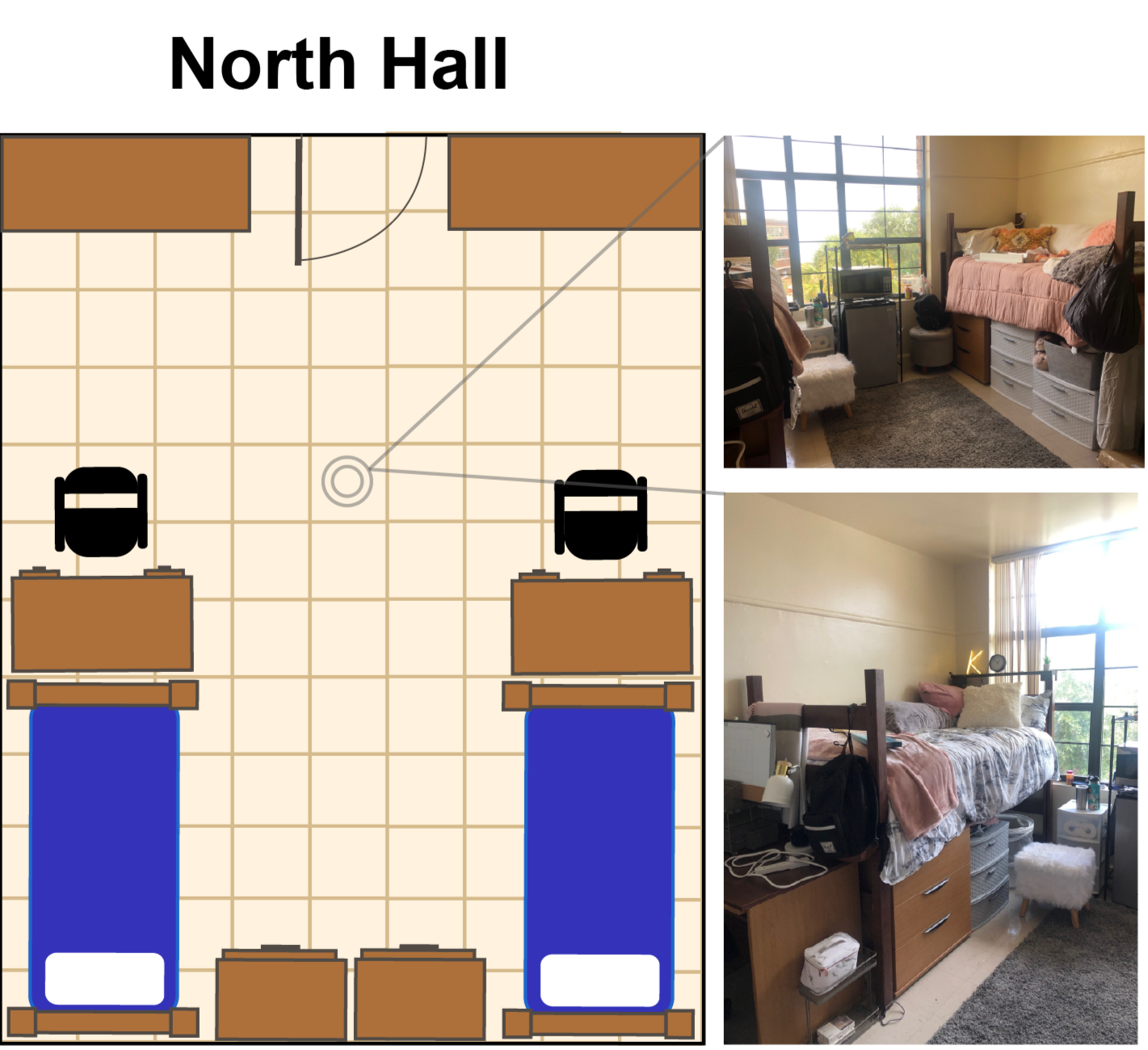
North Hall provides traditional-style dorms and offers single, double and triple rooms. It houses approximately 158 students and is home to the Pre-Health Living Learning Community. A Resident Assistant presides over each of the five floors to ensure safety and to promote a social atmosphere, and each floor houses one gender.
It was built in 1950 and designed by Guy Fulton who drew inspiration from the Collegiate Gothic style.
It is near amenities such as a swimming pool, a tennis court and Flavet Field. A pool table, ping pong table and sports equipment are offered in the common space on the first floor. Communal bathrooms and kitchens with a microwave and stove are located on every floor. Students are expected to bring their own refrigerator if they wish to have one.
It is known for its great location as it is located across the street from the O’Connell Center, Ben Hill Griffin Stadium and Van Fleet Hall, which hosts the ROTC program. It is also close to the Reitz Union, the College of Engineering and on-campus dining options Gator Corner Dining and Graham Oasis.
Katie Colman, a 20-year-old UF chemical engineering third-year, said North Hall’s convenient location was a major benefit of living there during her freshman year.
“It is located in a great spot if you’re into UF sporting events,” she said.
Colman also noted that the social environment at North Hall was mediocre.
Alvin Naiju, a 19-year-old UF biochemistry sophomore, agreed that North Hall’s close proximity to the heart of campus added to his positive experience there, but the older building had its drawbacks.
“The building itself is kind of old. I live in Infinity right now; my room
here is about half the size of the one I had at North but I still like it better because it just feels much nicer to live in,” Naiju said.
Pros:
“[It] is near the International LLC so overflow students were on my floor which made it very diverse,” Colman said.
“Very close to everything. The Reitz Union is a five-minute walk away; same for Gator Corner Dining. The gym and Turlington is maybe 10 minutes away,” Naiju said.
Cons:
“There was not much nightlife and we weren’t a close-knit community,” Colman said.
“The laundry room is shared with Tolbert Hall and is a bit of a hike from the farther side of North Hall,” Colman said.
“Communal bathrooms were definitely a con as well,” Naiju said.
Graham Hall
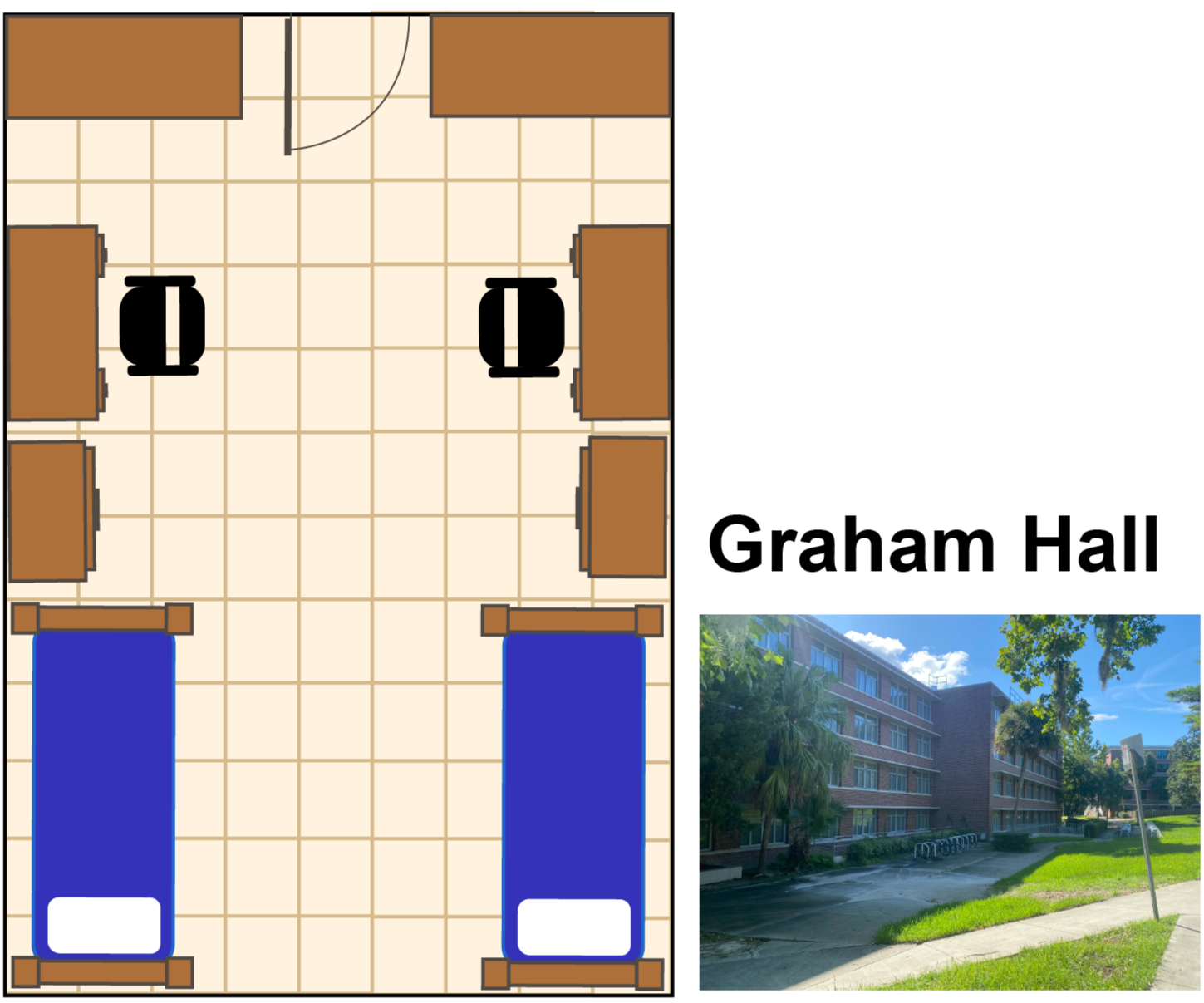
Nestled between the Reitz Union and Flavet Field, Graham Hall is centrally located on Florida’s campus and affords convenient access to on-campus dining, Gator athletics, a swimming pool, tennis courts and parking.
The hall’s layout consists of single and double rooms with communal bathrooms and kitchens with a stove and microwave on each floor. Students need to supply their own personal refrigerator, according to UF’s housing website.
Residents also have access to a recreation room with ping-pong and pool tables, independent study spaces and a P.O.D. Market which includes convenience-style products and food offerings from a full kitchen.
Graham Hall is home to the living learning community of Florida’s Black Cultural student union.
It was constructed in 1961 and is dedicated to Klein Harrison Graham, the longest serving member of the university’s staff at the time of his retirement in 1948. For 42 years, Graham served as the university Business Manager, Treasurer of the University Athletic Association and chair of the Florida Endowment Corporation.
At the beginning of Graham’s tenure with the university in 1906, he wrote student fees were only $5.00 per semester, rent was $2.50 per month and board was $12.50 per month.
Until 1966, Graham Hall exclusively housed men before being redesignated as a coed residence hall. The building remains coed by floor.
Kyle Chambers, a rising sophomore who lived in Graham Hall in the Spring, valued the residence hall’s proximity to campus must-haves.
“I love that Reitz is within a five minute walk,” Chambers said. “[Student] Rec is within a ten minute walk.”
Chambers, who spent his freshman year without a car or bike, said Graham Hall’s central location on campus was critical to his first-year experience.
“I literally heard from my dorm the sound of cheers from the stadium,” he said.
But Chambers thought Graham Hall had some downsides.
“Walking to my fraternity house [Kappa Phi Epsilon on University Avenue] was pretty obnoxious,” he said.
Kameron Green, who lived in Graham as a freshman in 2018-2019, said Graham was ideal for meeting new people.
“It being a traditional style dorm, I met my first 50 friends in the lounge,” Green said. “It’s a great place to make your first friends at UF.”
Pros:
“Chomp It is right downstairs,” Chambers said.
“The bus stop’s right there,” Chambers said.
“[Graham is] nearby where you can park, especially as a freshman,” Green said.
Cons:
“You had older facilities, sometimes I would have to wait for showers,” Green said.
“Communal bathrooms were not the best,” Chambers said.
Simpson Hall
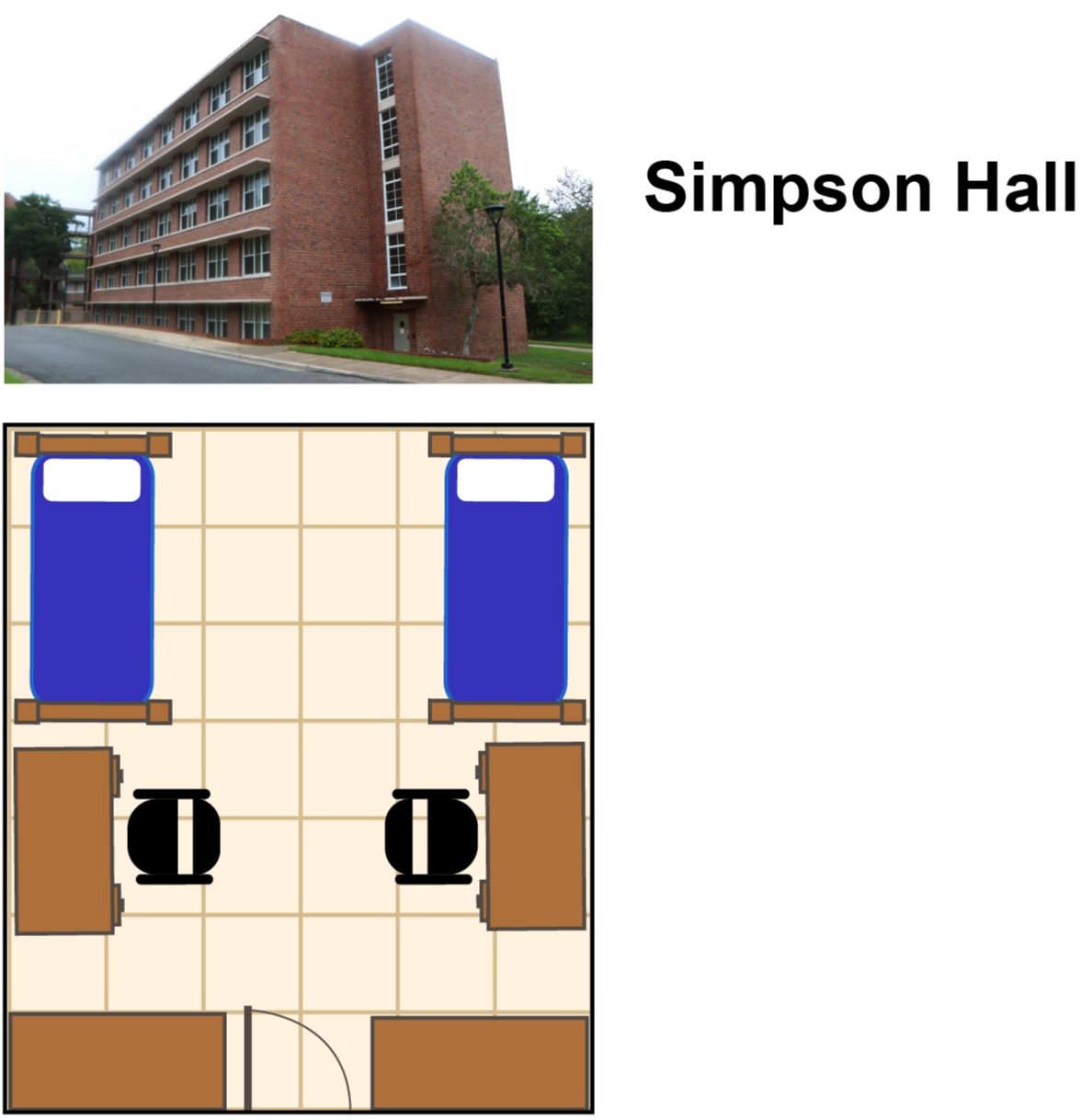
Sociable, yet quiet; known, yet hidden — key characteristics that define Simpson Hall. Located on the west side of campus near fraternity row, Simpson Hall is a rather unknown gem to many students, as its competitors such as Broward and Murphree scream notoriety.
The traditional-style hall houses 222 students in double-room layouts. There is a common space for cooking and watching TV, and a communal bathroom is offered to students.
Simpson Hall was built in 1961 and is named after Thomas Marshall Simpson, an author, professor and dean of graduate school who was head of the Department of Mathematics from 1918 to 1951. He financially contributed to the university.
The hall stands next to Trusler and Graham Hall in Graham area, where the Black Cultural living learning community resides.
Some pros for the hall are the location and environment.
Andrea Rabinowitz, 19-year-old microbiology and cellular sciences freshman, prefers Simpson Hall because of its relative distance to the Reitz Union and the physics and microbiology buildings.
“It’s kinda smack in the middle of where I want to be,” Rabinowitz said.
Pros:
“The proximity to Chomp It,” said Gary Gouty, 18-year-old nursing freshman.
“It’s relatively quiet,” Rabinowitz said. “There’s not a lot of chaos that goes down.”
“It was definitely the most sociable dorm,” said Lupi Diaz, 19-year-old biology freshman.
“It’s pretty spacious,” Diaz said.
Cons:
“I disliked the (traditional) bathrooms,” Gouty said.
“It’s a little far from the educational buildings,” Diaz said
Trusler Hall
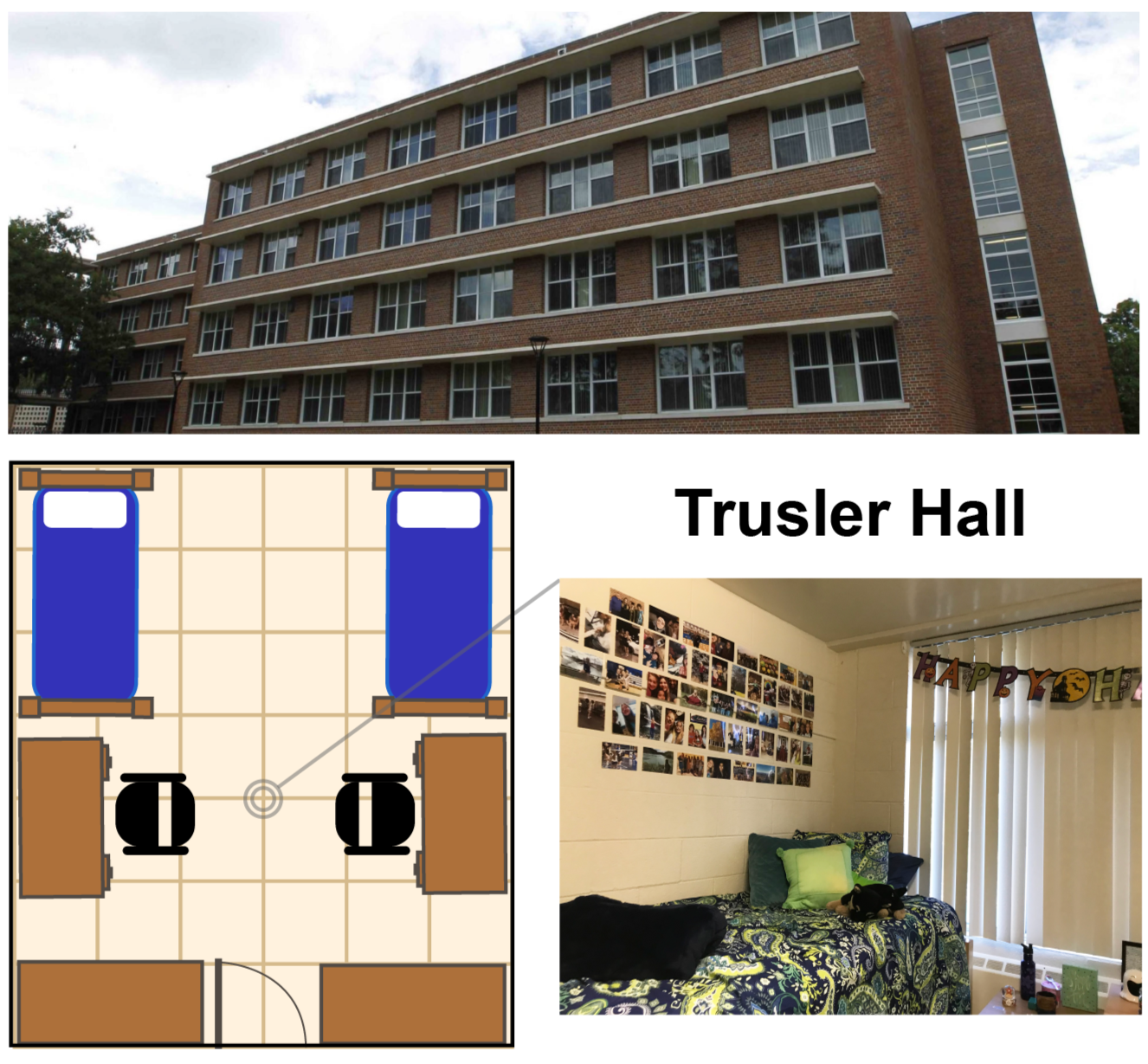
Trusler Hall is one of the oldest dorms at UF, opening in 1961. A classic traditional dorm, it connects with Simpson and Graham to form Graham Hall and is extremely close to Chomp It and the P.O.D. Market.
Trusler Hall consists of double rooms with two beds and closets on either side of the door. A wooden desk with a chair, dresser, and nightstand all come with the dorm.
Trusler beds can't be lofted, but they range from 31 to 35 inches high. A stool could be used to get into bed if one feels less athletic at the end of the day.
There are five floors, with graduate students on the ground floor and 50 residents and one Resident Assistant per level on 1-4. There is no elevator use except on move-in day and move-out day, and the laundry room is on the bottom floor. Carmen Zachry, a 20-year-old telecommunications major, said carrying laundry up and down the stairs was a real arm workout.
Communal bathrooms sit in the middle of each hallway. There are two sides separated by a door that can go locked or unlocked. Each half contains three bathroom stalls, four sinks, four mirrors and two showers. The shower pods are their own setup: They are right next to each other, divided by a wall in the middle. Curtains cover the showers. There can be some variance in the structure; for example, on one floor, there are urinals in one half of the bathroom.
The kitchen provides a stove, microwave, oven, Pepsi vending machine, blue sofa, table, chairs, waste bins, and sink.
Many former residents expressed appreciation for Trusler’s location.
“I liked that it wasn’t in the middle of a lot of things, but also near the dining hall,” Kaitlyn Arnold, the 20-year-old advertising major, said. “I liked our part of campus.”
Chomp It and the P.O.D. Market are just downstairs and open until 3 a.m.
“Chomp It was the best,” said Zachry. “It was super convenient if you needed quick groceries or an easy meal.”
Trusler Hall is a 10-minute walk or less away from Graham Pool, Gator Corner Dining Center, the Reitz Union, Florida Gym, Weimer Hall, the Engineering Building, Flavet Field, and Fraternity Row.
Gamedays are convenient, the former residents agreed, due to Trusler’s proximity to Ben Hill Griffin Stadium, Stephen C O’Connell Center, and James G. Pressly Stadium.
There are accessible bus stops on several sides of the building.
Trusler Hall also hosts the Leader Scholar Program LLC (Living Learning Community).
Pros:
Yazmeen Simpson, a 20-year-old electrical engineering major, said the dorm was located very close to campus.
Trusler had no bug problems at all, Arnold said: “That’s the reason I did not pick Broward. I got told by someone older than me: Do not pick Broward because they have bugs.”
Arnold said it was fun to hear the excitement of gameday before arriving and the roar of the crowd in a lively part of campus, especially by the P.O.D. Market: “It made me feel like people were all around you and stuff, like, I didn't care that people were screaming at night, I thought it was kinda fun. It was pretty social.”
Cons:
“Don’t expect to have any peace on game day,” Zachry said.
“The laundry room kinda sucks. It was always warm, smelled awful and flooded a couple of times,” Zachry said.
Even though the shower pods were all girls, Arnold said they were “a little too close for comfort. It felt like total privacy was kind of lost in Trusler.” Curtains covered the shower rather than stall doors like in Broward and didn’t cover all the way on both sides.
Keys Residential Complex
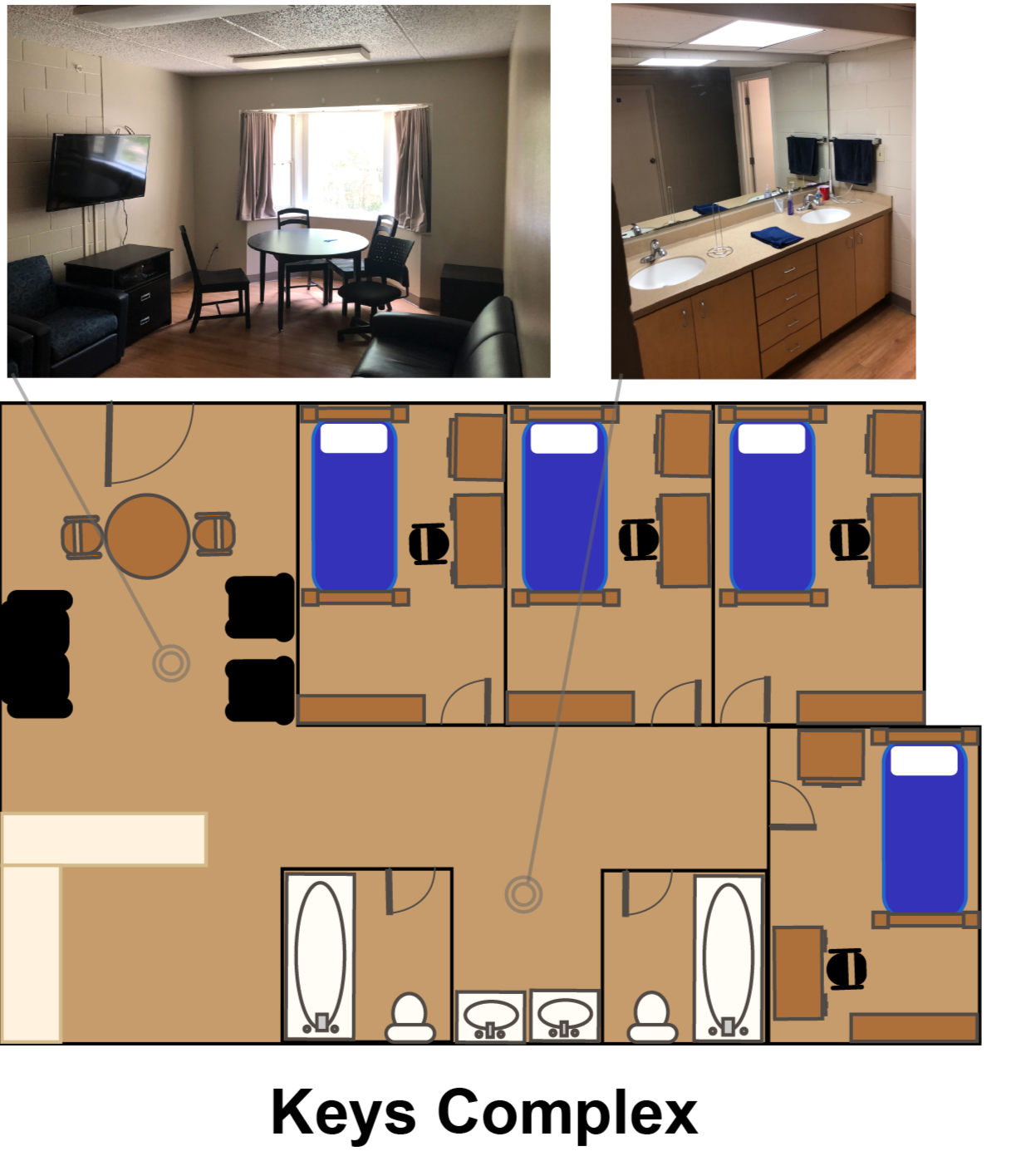
Keys Complex is located off Stadium Road between Flavet Field and James G. Pressly Stadium. It’s near the College of Law, College of Engineering, College of Journalism, College of Human Health and Performance, Fraternity Row, the Gator Corner Dining Center and University Athletic facilities like the Swamp and the O’Connell Center.
The complex, built in 1991, has apartment-style rooms. Each apartment includes four bedrooms with full-size beds, a living room, two bathrooms and a kitchen equipped with a stove, oven, microwave and full-size refrigerator. The Keys Complex houses 419 residents who are mostly upperclassmen and student-athletes.
The residence hall was last renovated in 2015 and 2016. UF installed curtain-wall systems that enclosed an open-air breezeway for five of the 10 buildings for extra security. They also completed interior renovations and upgraded the Keys Commons area, including its lobby, bathrooms, offices, kitchen, computer lab, library and laundry room.
The old ballpark for Florida baseball is being replaced with the James W. Heavener Football Training Center that is scheduled to be finished in December 2021. The construction currently underway is noisy for current residents.
A list of the pros and cons as well as the price of the Keys Complex dorms are listed below:
Pros:
“I love having my own private bathroom, so I don’t feel the need to wear shower shoes every single time I go in there.” Deven Ellis said.
“The kitchen is a huge plus,” Ellis said. “I was able to move off a meal plan, which is amazing.”
“I like how the beds are full size instead of the weird XL twin thing,” Ellis said.
Cons:
“It’s hard to meet different people because it’s mainly athletes,” Maynes said. “They already have their friend groups.”
“The internet at Keys is absolutely atrocious,” Ellis said.
Ellis said the wireless WiFi is spotty and the wired connection is prone to randomly go out for 10-20 minutes.
Springs Residential Complex

Perched atop Fraternity Row, Springs Residential Complex’s 476-person capacity sprawls across six brick buildings.
Every building is four stories high and filled with fully-furnished single and double suites, which are two rooms adjoined by a shared bathroom.
Each floor has lounges where residents can cook in the kitchen and eat at the tables provided.
Across from the residence buildings sits the commons building, where residents can pick up their mail, relax in the recreation room, do their laundry or work on homework in the study room.
Springs Complex was built in 1995 to assist in relocating male athletes from the now-closed Yon Hall, which was one of the athletic residence halls eliminated at the 1991 NCAA convention.
Due to its proximity to numerous athletic facilities on the west side of campus, including the Stephen O’Connell Center and Ben Hill Griffin Stadium, Springs Complex remains a popular residence hall for UF athletes.
The hall was renamed the Springs Residential Complex in 2000 to celebrate Florida’s environmental landscapes through some of the most popular springs in Florida: Paradise Springs, Gemini Springs, Juniper Springs, Altamonte Springs, Eureka Springs and Coral Springs.
This summer, Springs Complex adopted the Lavender LLC — a living-learning community meant to ensure gender-neutral housing and provide a safe environment for LGBTQ+ students.
Pros:
“There’s so many buses that come by so often, that was really helpful for getting to just roll out of bed and go to class,” Abigail Isbill said.
“I actually liked that it was a bit further away from everything, just because sometimes I enjoyed the walk into the main campus,” Meagan O’Malley said.
“If you’re looking for a quiet place where you can study, since I’m in a harder major, it was easier for me to study and do work in my dorm,” Devon Limbangco said.
Cons:
“There’s not a common area [in the building] so it's kind of awkward. Like if you have people over, you can just bring them in your room and sit on the floor or on your bed,” Limbangco said.
“It’s kind of a long walk [to] the laundry room. I was on the fourth floor and my arms got tired,” Limbangco said.
“If you have to leave for some reason at a weird time in the day, your [parking] spot will definitely be taken and you may have to end up parking all the way down Frat Row,” Isbill said.
Lakeside Residential Complex
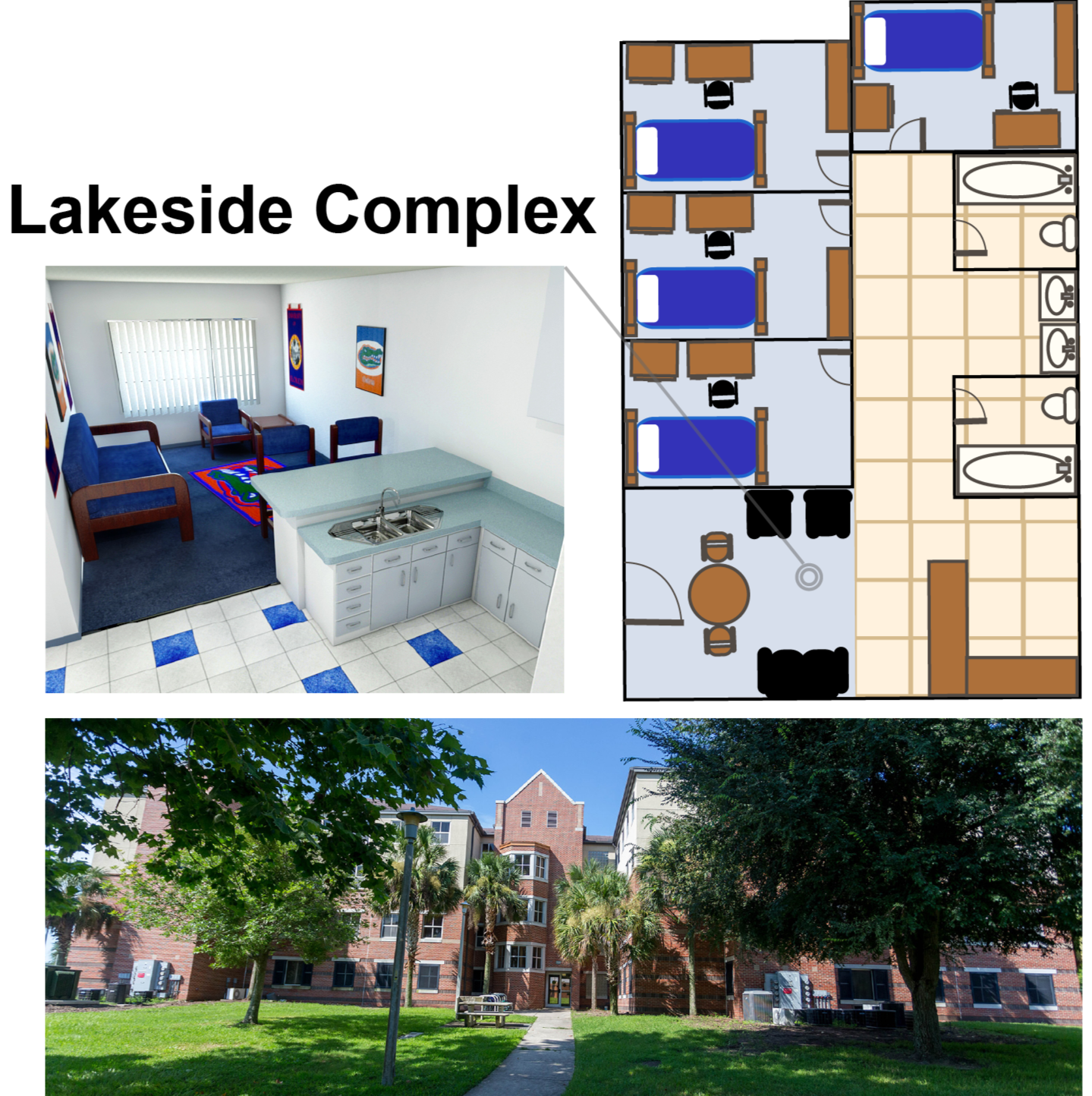
Built on a 8.3-acre site, the Lakeside Residential Complex is located at the corner of Radio Road and Museum Road. Lakeside is within walking distance of the Southwest Recreation Center, Lake Alice, the Florida Museum of Natural History, the Phillips Center for the Performing Arts and the UF Counseling and Wellness Center.
There are 135 apartments at Lakeside with private or shared bedroom options, according to UF Housing. The bedrooms come fully furnished with a bed, desk, chair and dresser per resident.
Each apartment comes with two bathrooms (which are cleaned weekly by custodial staff) and a kitchen with a full-size refrigerator, stove, oven, and microwave. Rental rates include cable television, electricity with a cap, water and internet.
Construction for the complex began in May of 1999 and cost approximately $20.5 million. As a modification of the Keys Residential Complex design, Lakeside was designed by KJB Architects, Inc., of Jacksonville with the Bovis Construction Company of Orlando as the general contractor.
The commons facility features an information desk, staff and student government offices, study and recreational rooms, laundry facilities and vending machines. The community also has courtyards and barbeque grills for student use.
Lakeside is home to the Faculty-in-Residence Program and is composed mostly of upper division students. The complex also has bus route access to lines 20, 28, 118, 119 and 125.
Teley LaPorte, a 20-year-old electrical engineering junior, lived at Lakeside from Fall 2019 to Spring 2020. She said while Lakeside has many bus routes to campus, parking at the complex was an issue.
“Sometimes, I had to circle the block for 30 minutes to wait for someone to leave or park at the post office across the street and move my car at 7 a.m. the next morning,” LaPorte said.
Kayleigh Williams, an 18-year-old applied physiology and kinesiology sophomore, lived at Lakeside from Fall 2020 to Spring 2021. She said despite her dorm’s small appearance, she was able to make space for her belongings.
“It doesn't seem like much room in the dorm, but the under-the-bed storage was super helpful,” Williams said.
Pros:
“It’s super close to the gym, as well as the southwest fields,” Williams said.
“I liked only having to share a bathroom with one other person,” LaPorte said.
“The lounge was really big,” LaPorte said.
“The kitchen in the apartment was great, and I cooked almost all of my meals,” Williams said.
Cons:
“It was so far and secluded from everything,” Williams said. “There’s no way you could walk to most classes.”
“The price is way more than it should be,” Manko said.
“Not having a laundry machine in the apartment was annoying, but not unbearable,” Williams said.
Hume Hall
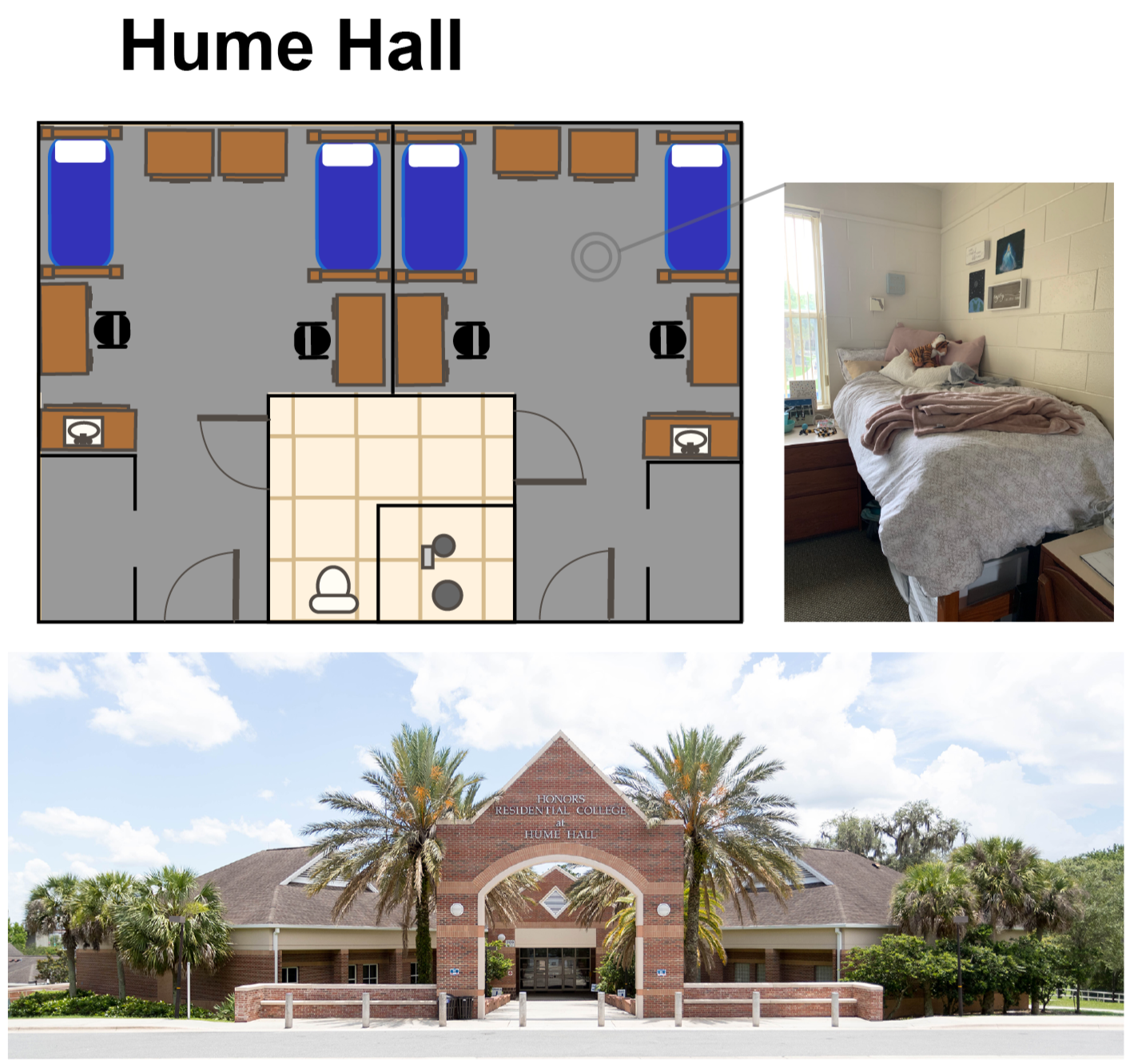
Hume Hall is the residence hall exclusive to students in the UF Honors Program. The complex, built in 2002, is split into the Hume East and Hume West residential halls, with the Hume Commons in between.
Hume Hall is located just past Gale Lemerand Drive along Museum Road, close to the Reitz Student Union, Flavet Field, College of Engineering, The Hub food court and Gator Corner Dining. Multiple Regional Transit System bus routes are accessible from the Hume Hall bus stop.
Samantha Hsu, a 20-year-old UF sociology third year, said Hume Hall’s central location was a positive aspect of her living experience.
“I liked how it wasn’t right on the main campus, but close enough to everything,” she said.
But the location, outside some of the more popular locations on campus like the Marston Science Library or Plaza of the Americas, was inconvenient at times for residents like Carina Copley. Copley, a 20-year-old nutritional sciences third year, said it took her over 15 minutes
to walk to most of her classes.
Hume Hall offers single and double suite-style rooms. Double rooms include two beds, two desks, a closet, cabinet and drawer space, a sink with a mirror, a microwave and a mini refrigerator. Two double suites are connected by a bathroom, shared among four residents. Single rooms include one bed, one desk, one closet and a bathroom. Students occupy double rooms, while resident assistants occupy single rooms.
Amenities in Hume Commons include the laundry room, mailboxes for each student, package lockers, study rooms, printers and the Area Desk.
Students in Hume Hall have the opportunity to join honors organizations such as the Student Honors Organization and the Hume Area Council — two organizations dedicated to planning and hosting social events for residents. Between these organized events and the common spaces and study rooms in East and West, Patrick Lewicki, a 20-year-old UF political science and economics third year, said residents have ample opportunities to socialize.
“Many nights were spent in my floor’s common room hanging out with my friends and eating Chomp It,” he said.
Hsu, Copley and Lewicki all credited Hume Hall with introducing them to people they now consider close friends. All three said they had a positive living experience in Hume, and they said the social aspect was the best part.
Pros:
“I had an attached bathroom that I shared with my roommate and two suitemates, which I thought was really convenient,” Copley said.
“Definitely one of the more spacious and newer dorms,” Hsu said.
“I loved the room space and suite style,” Hsu said.
Cons:
”The location was pretty far from a lot of my classes and the main area of campus,” Copley said.
“One time the elevator broke, and one of my friends’ roommates was trapped inside for an hour,” Lewicki said.